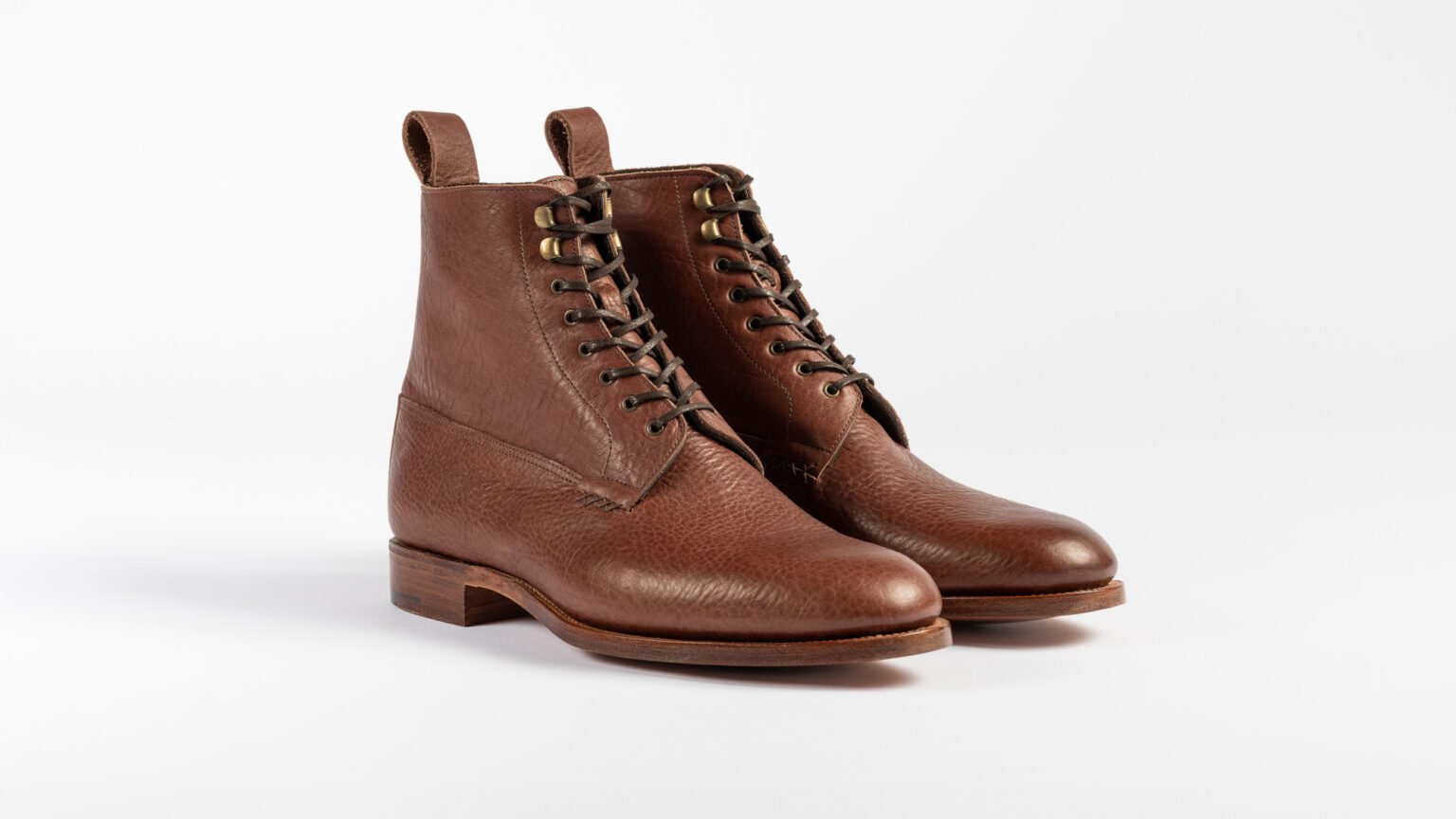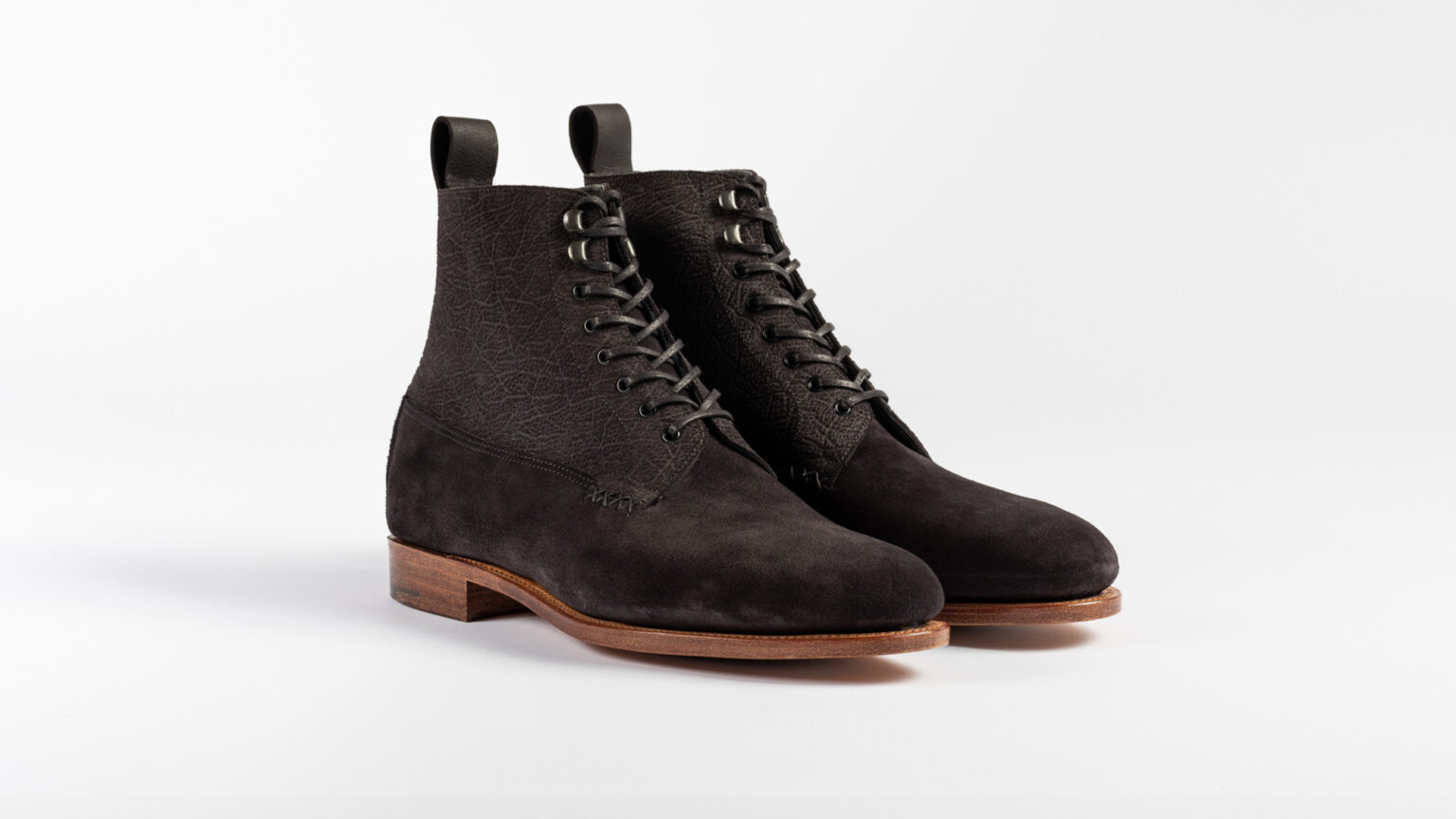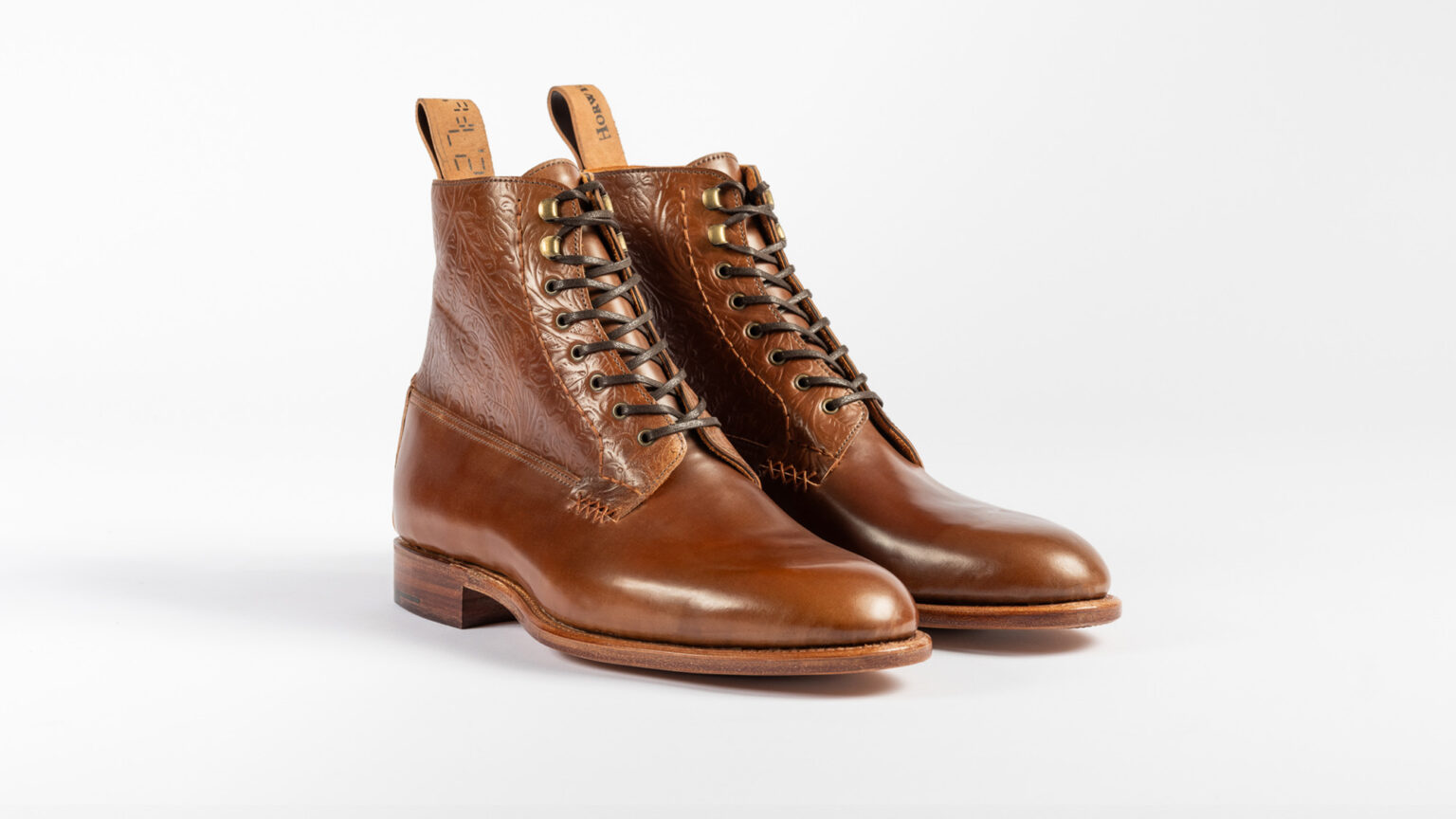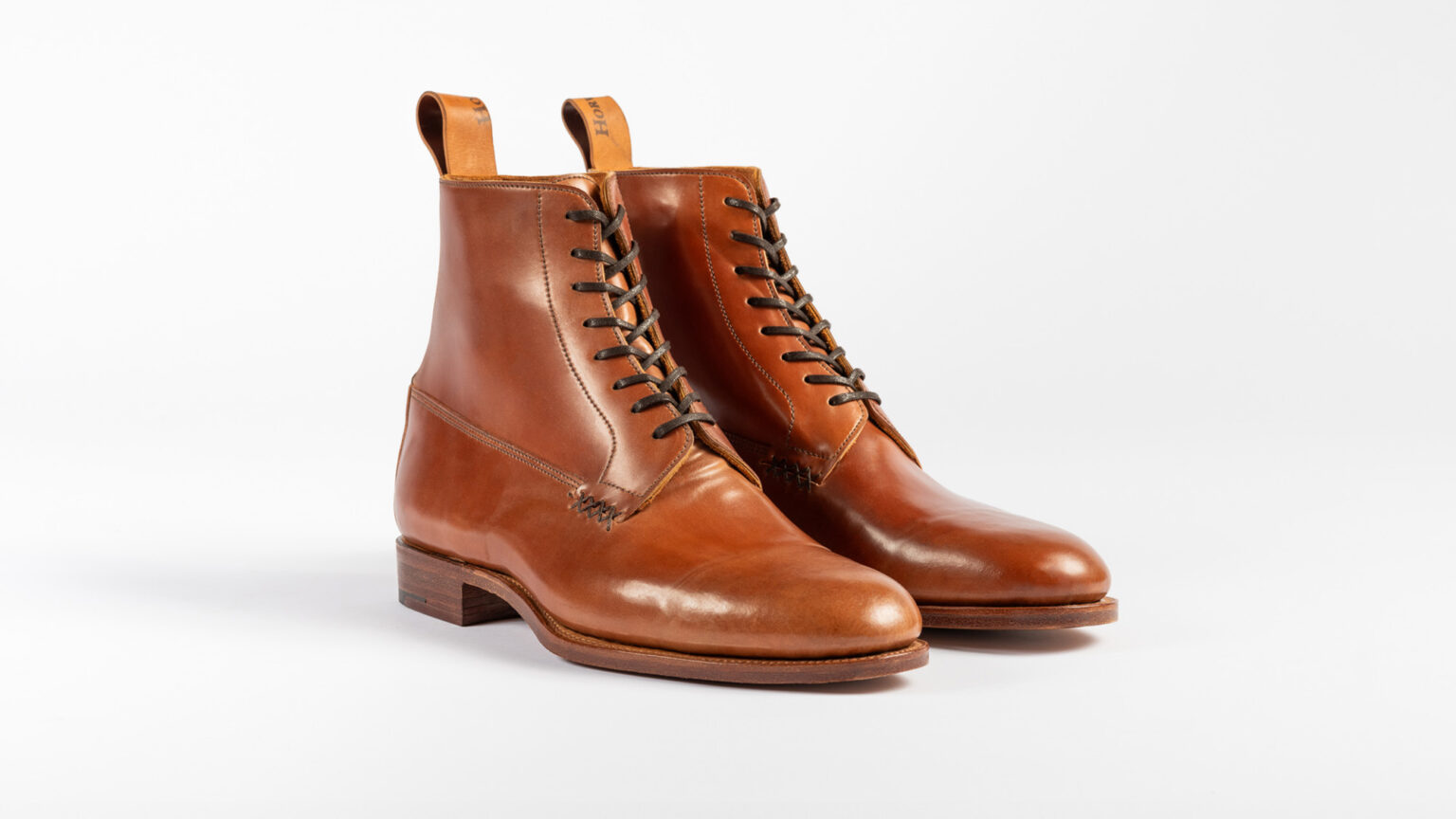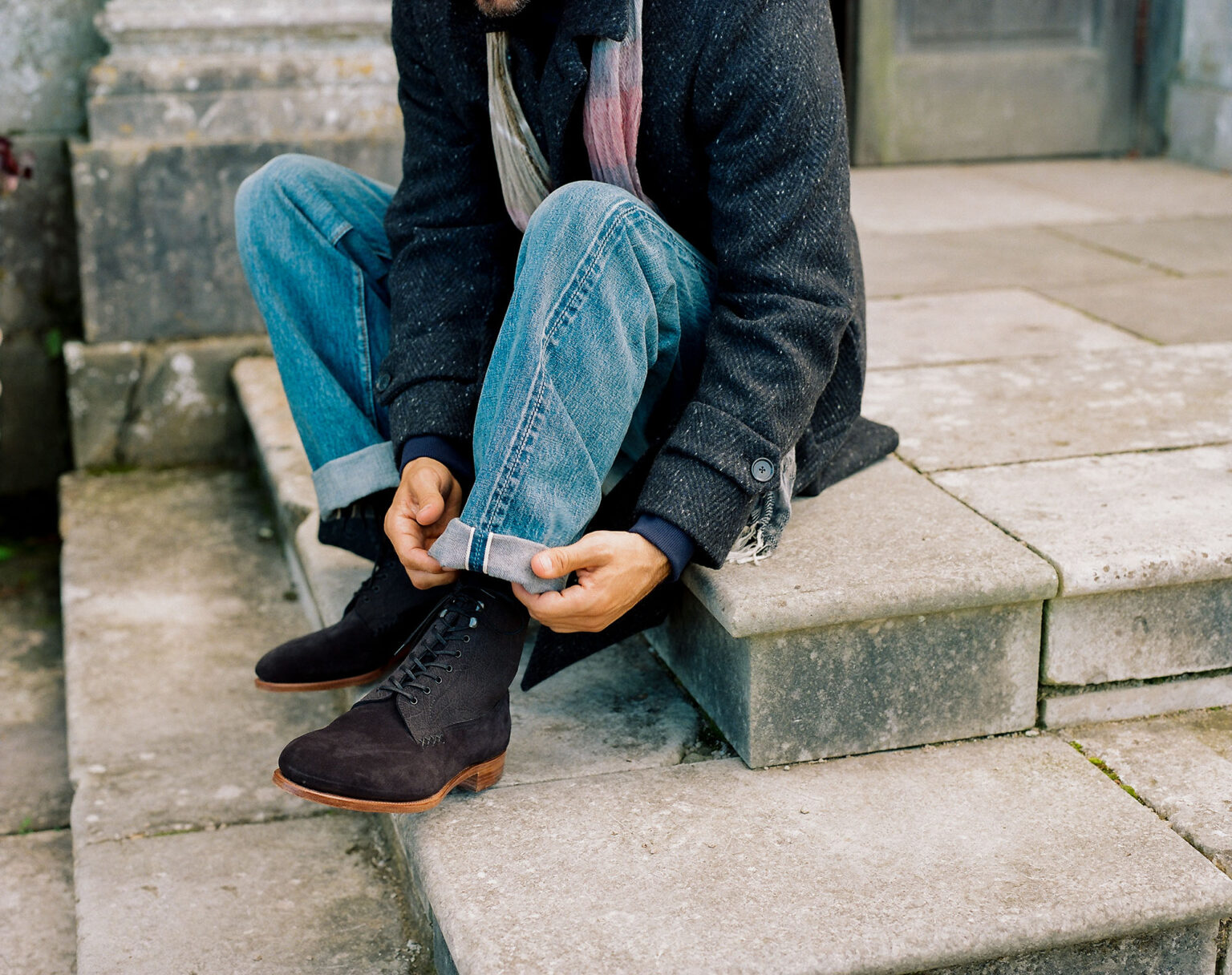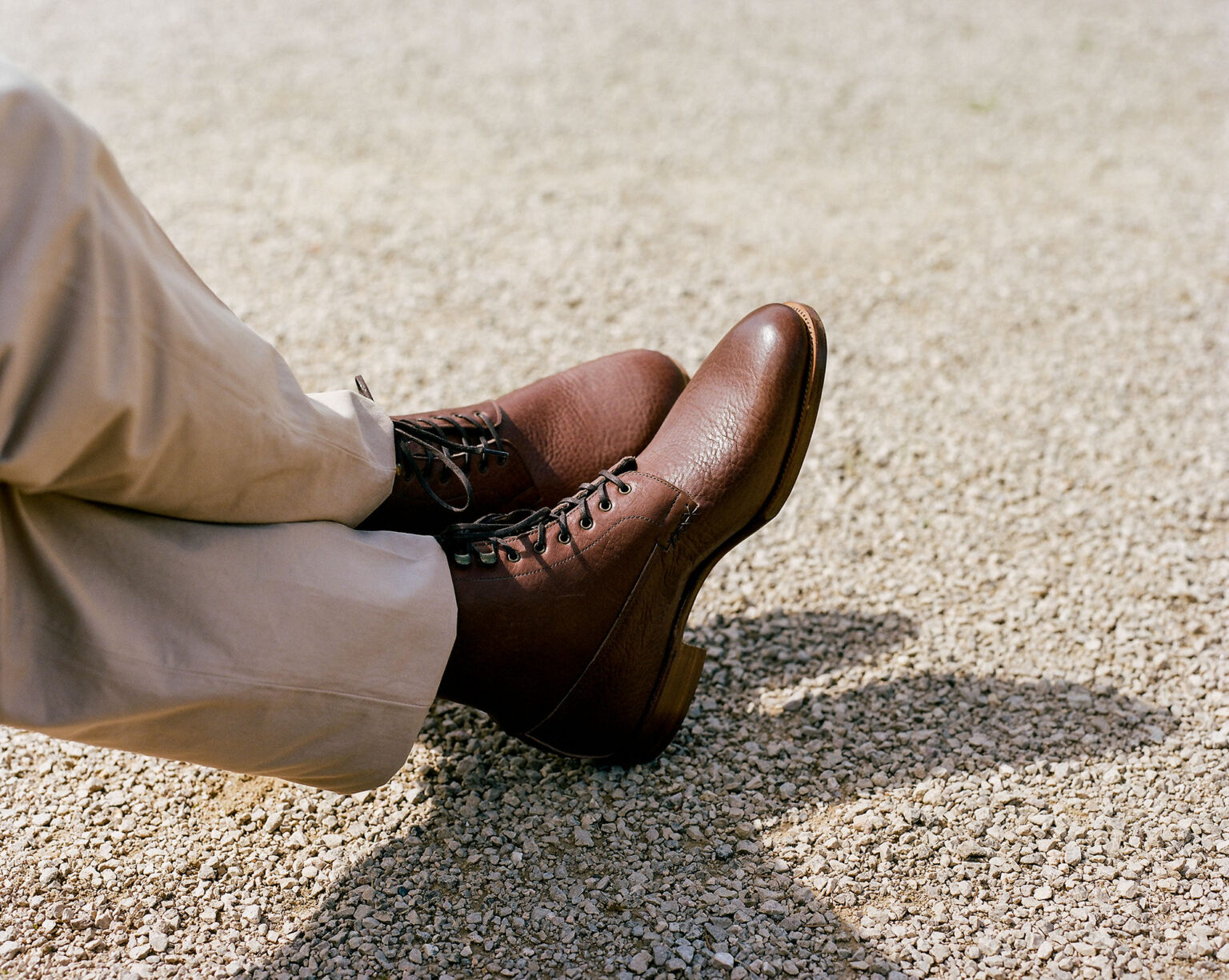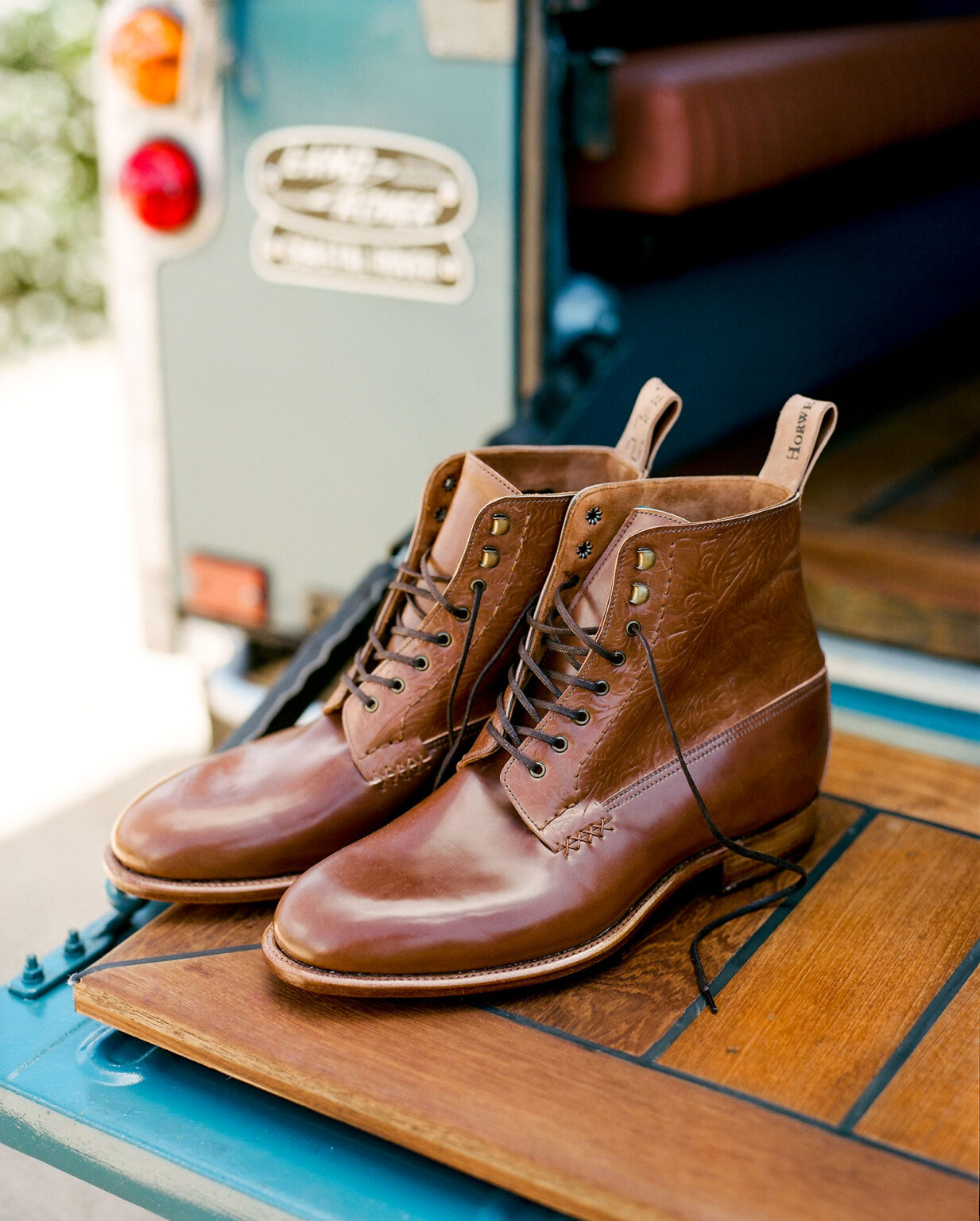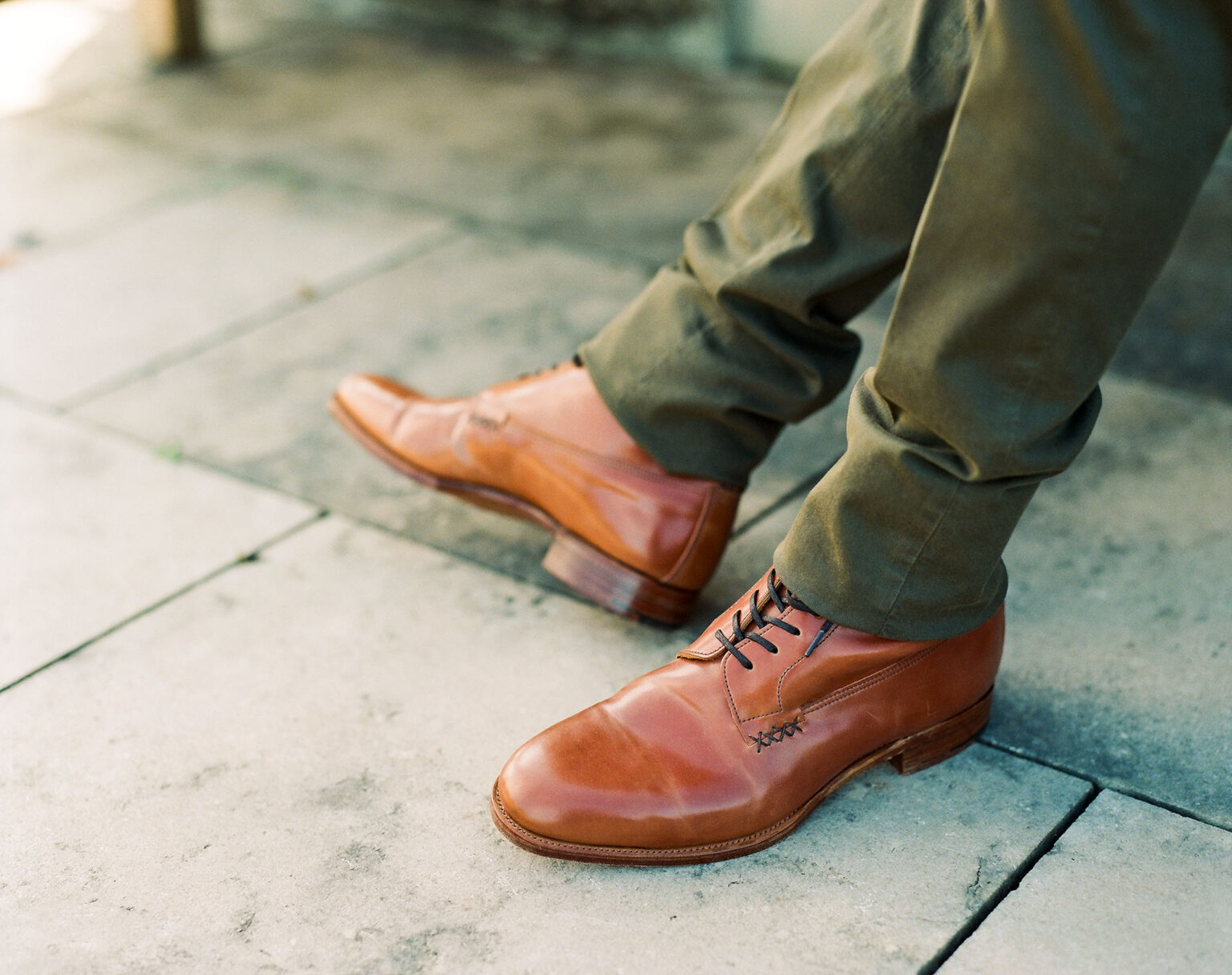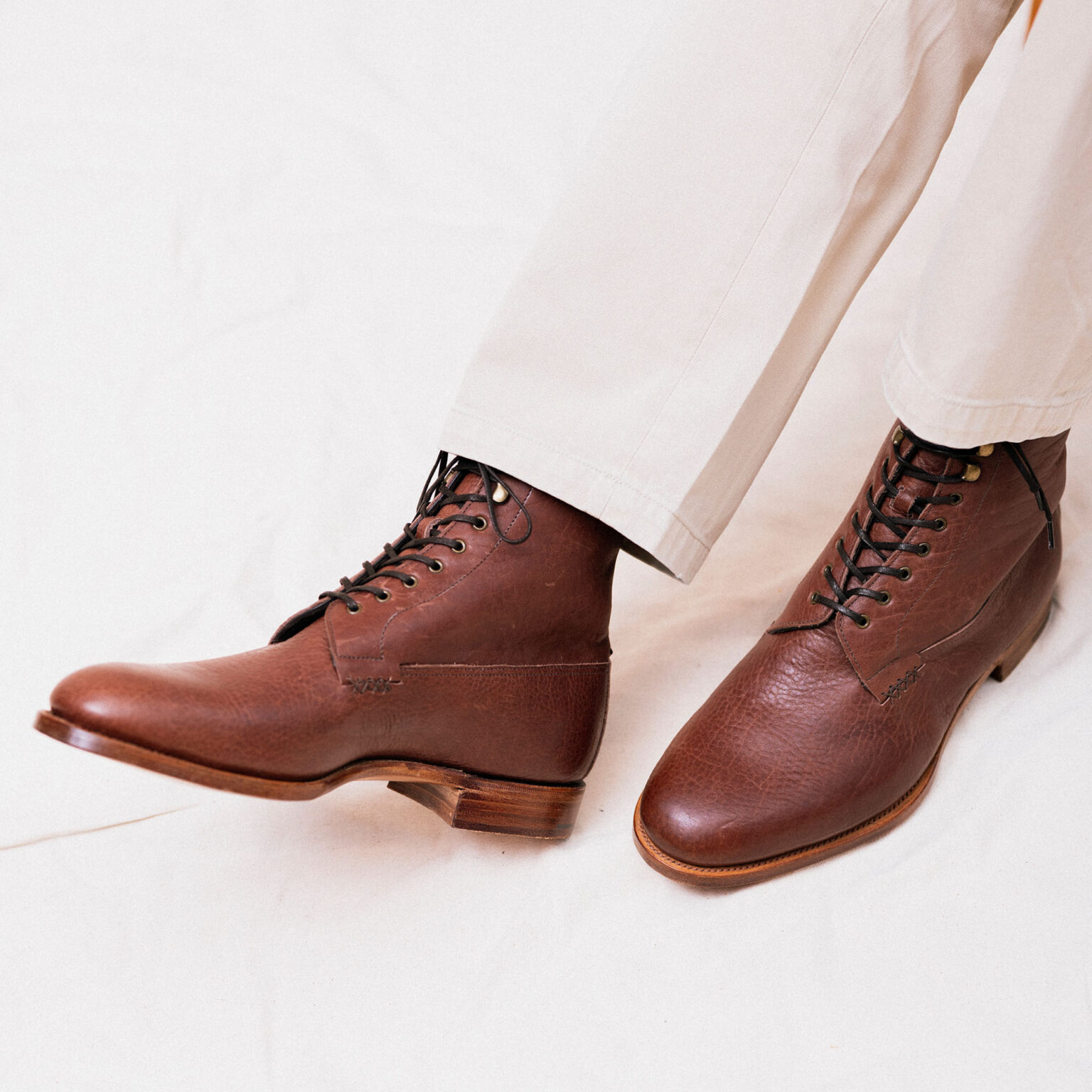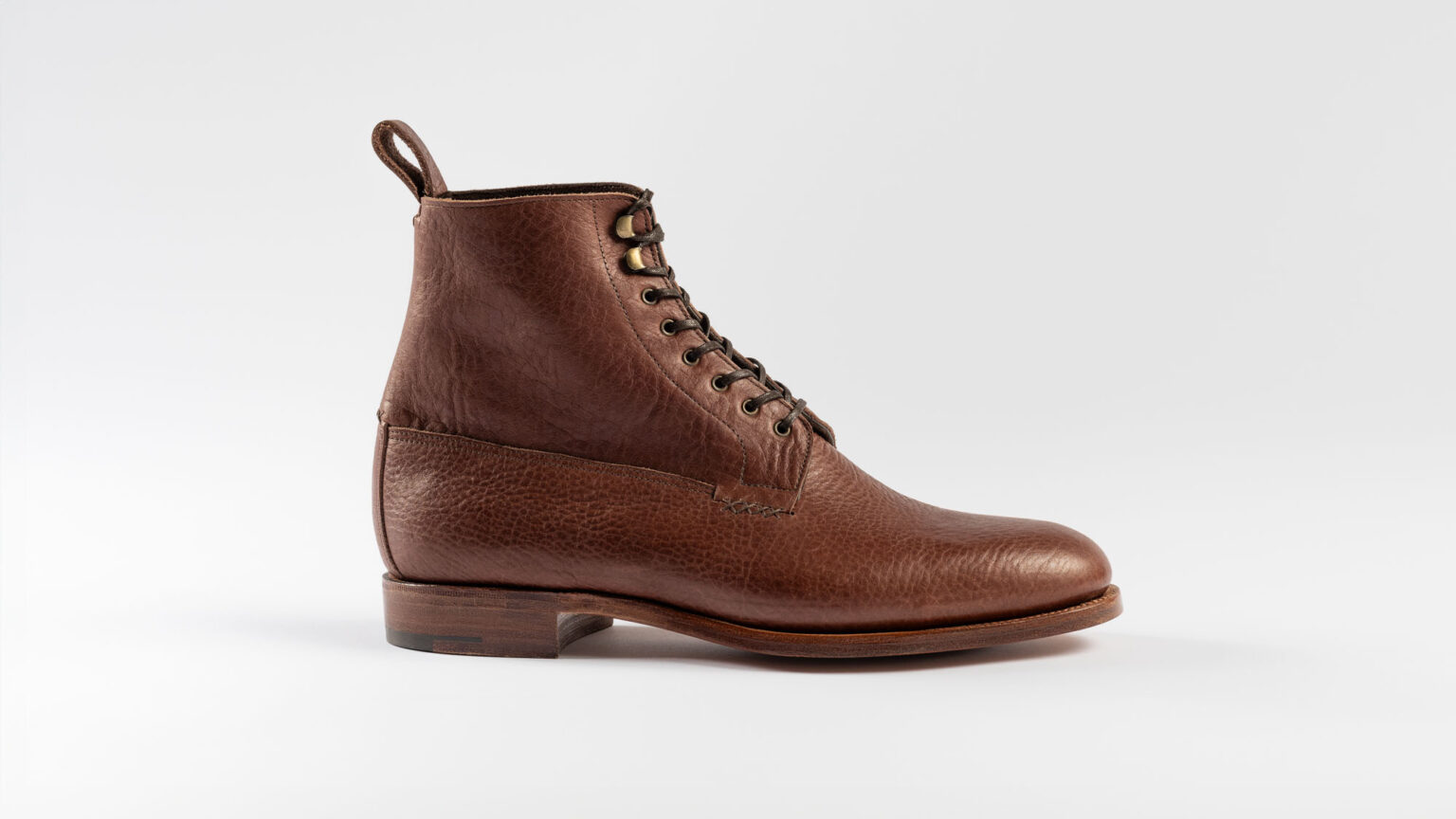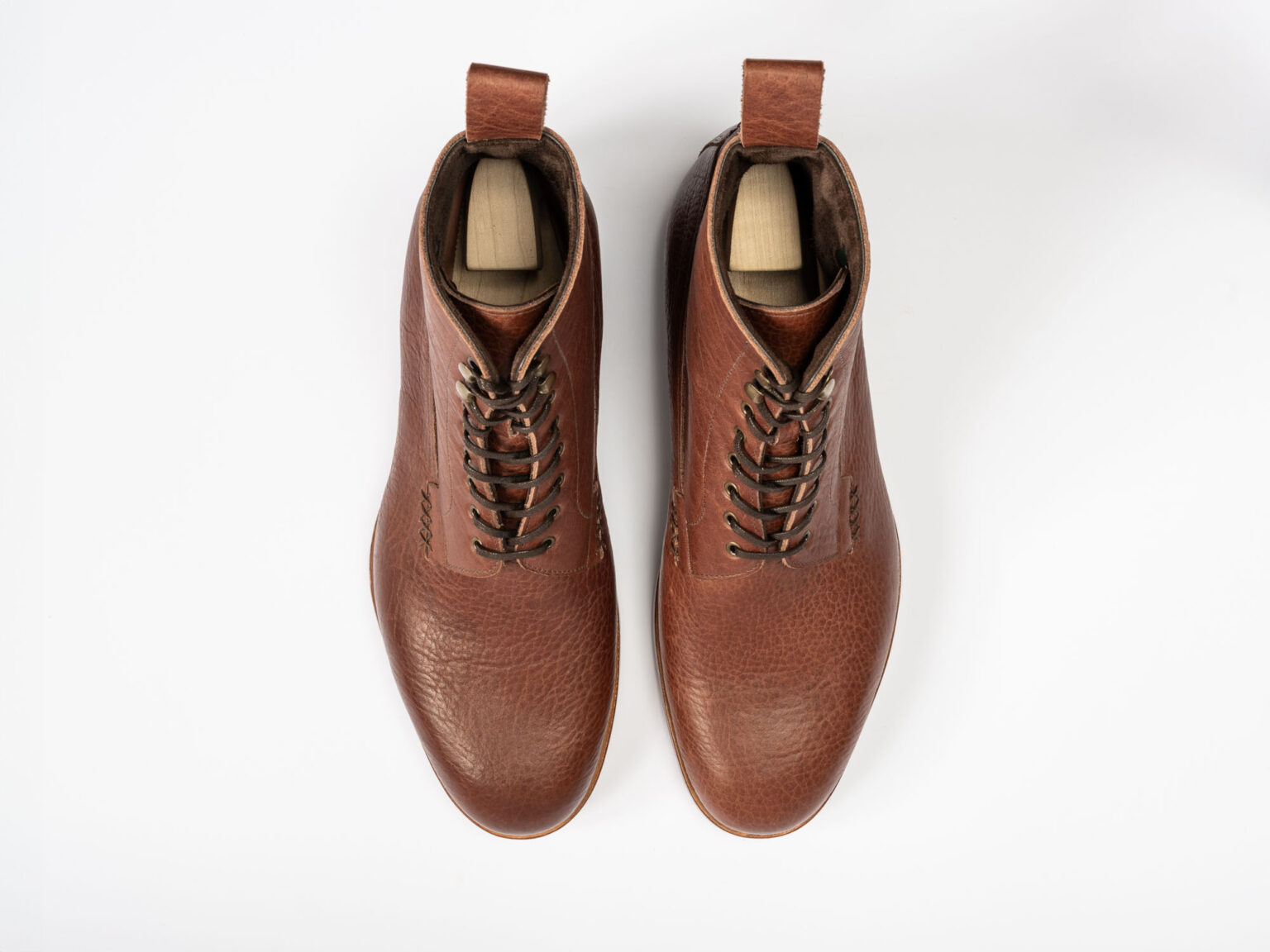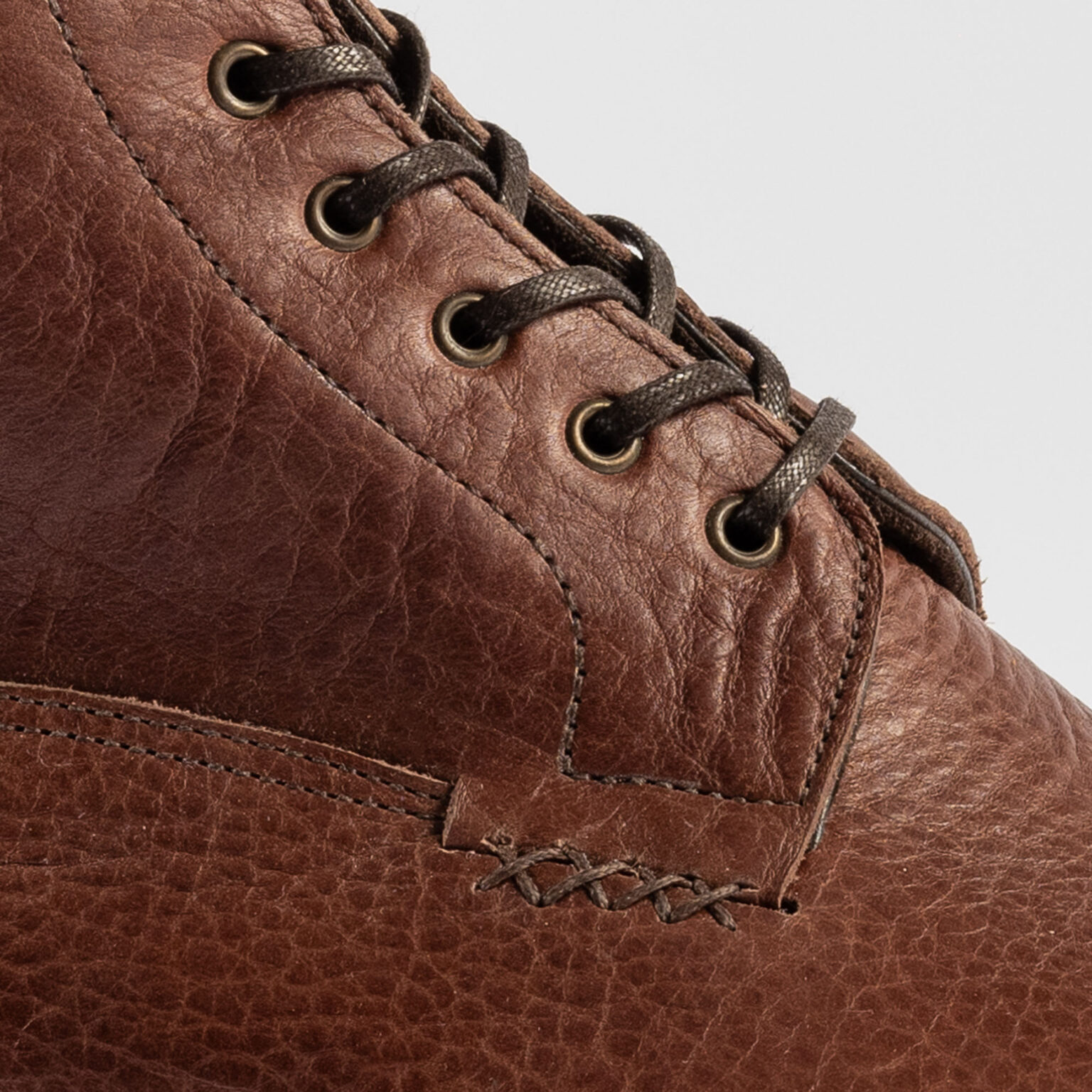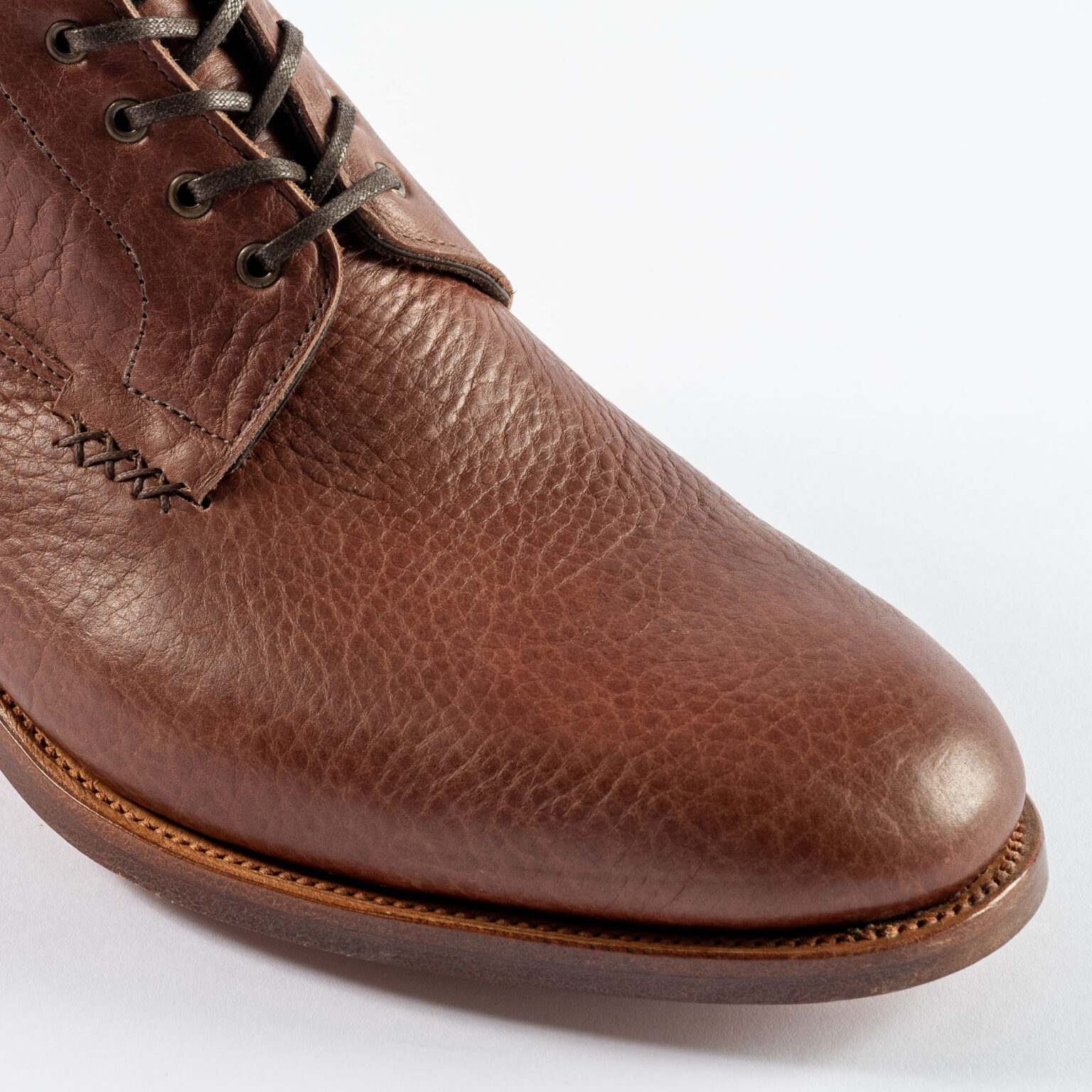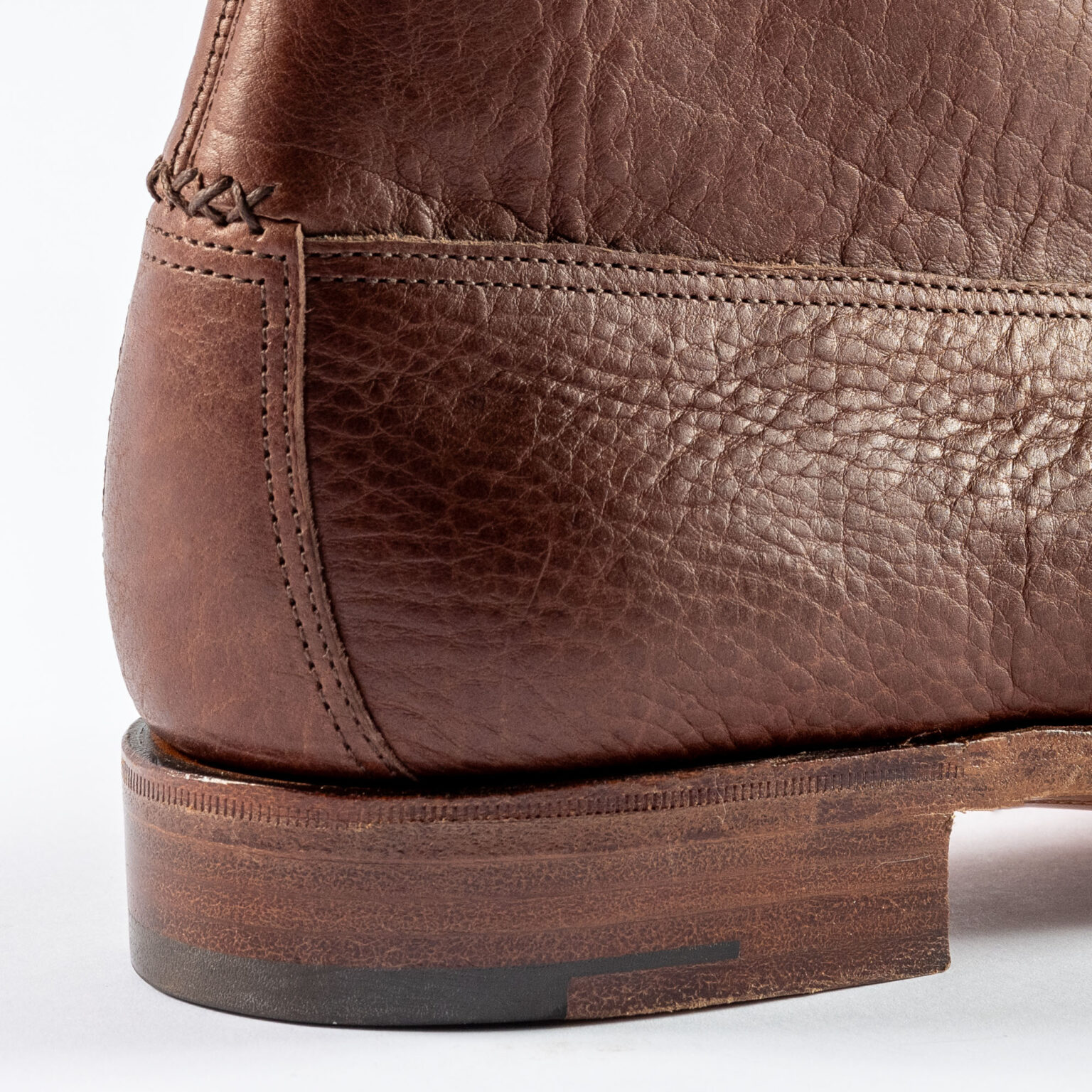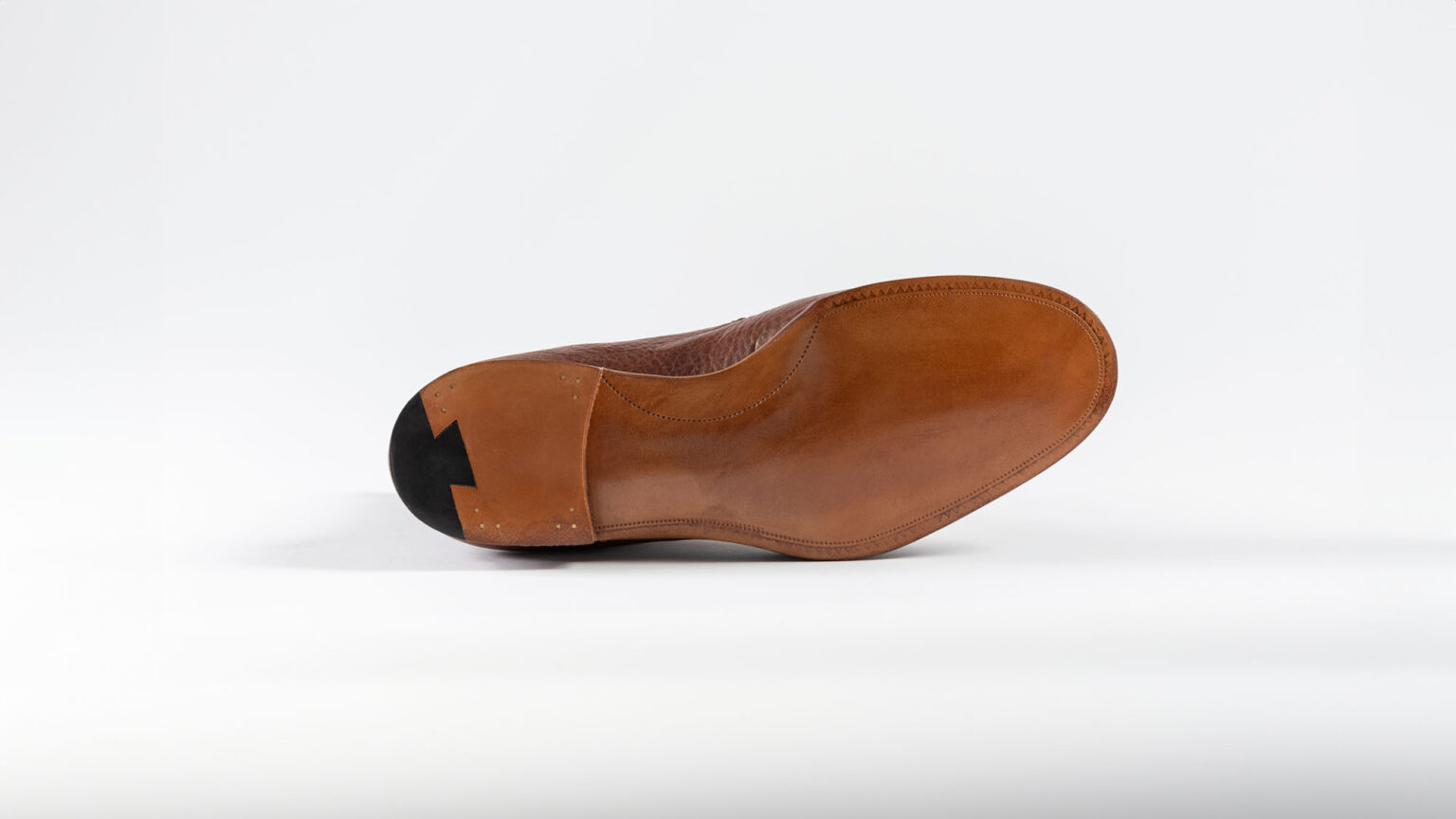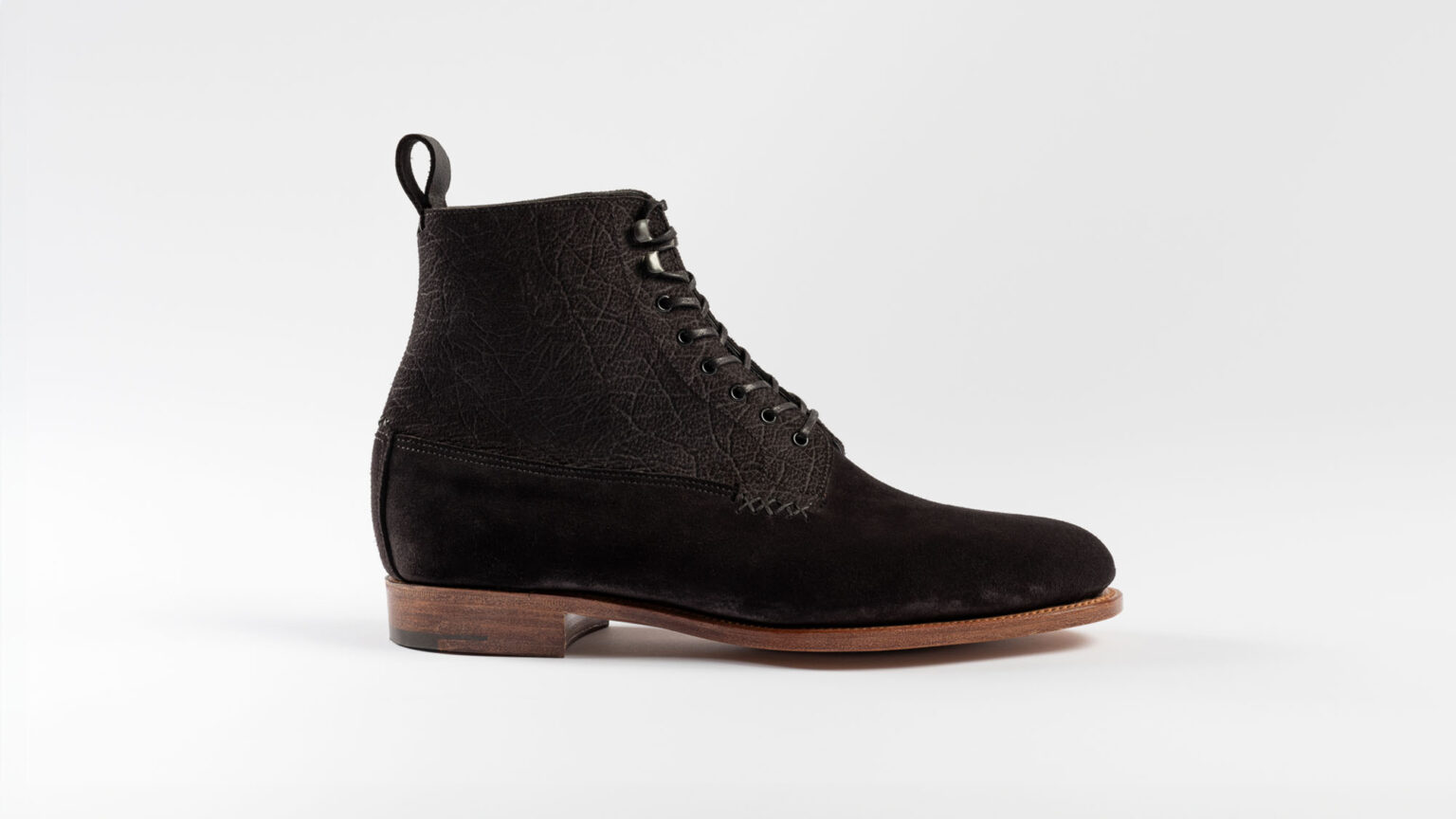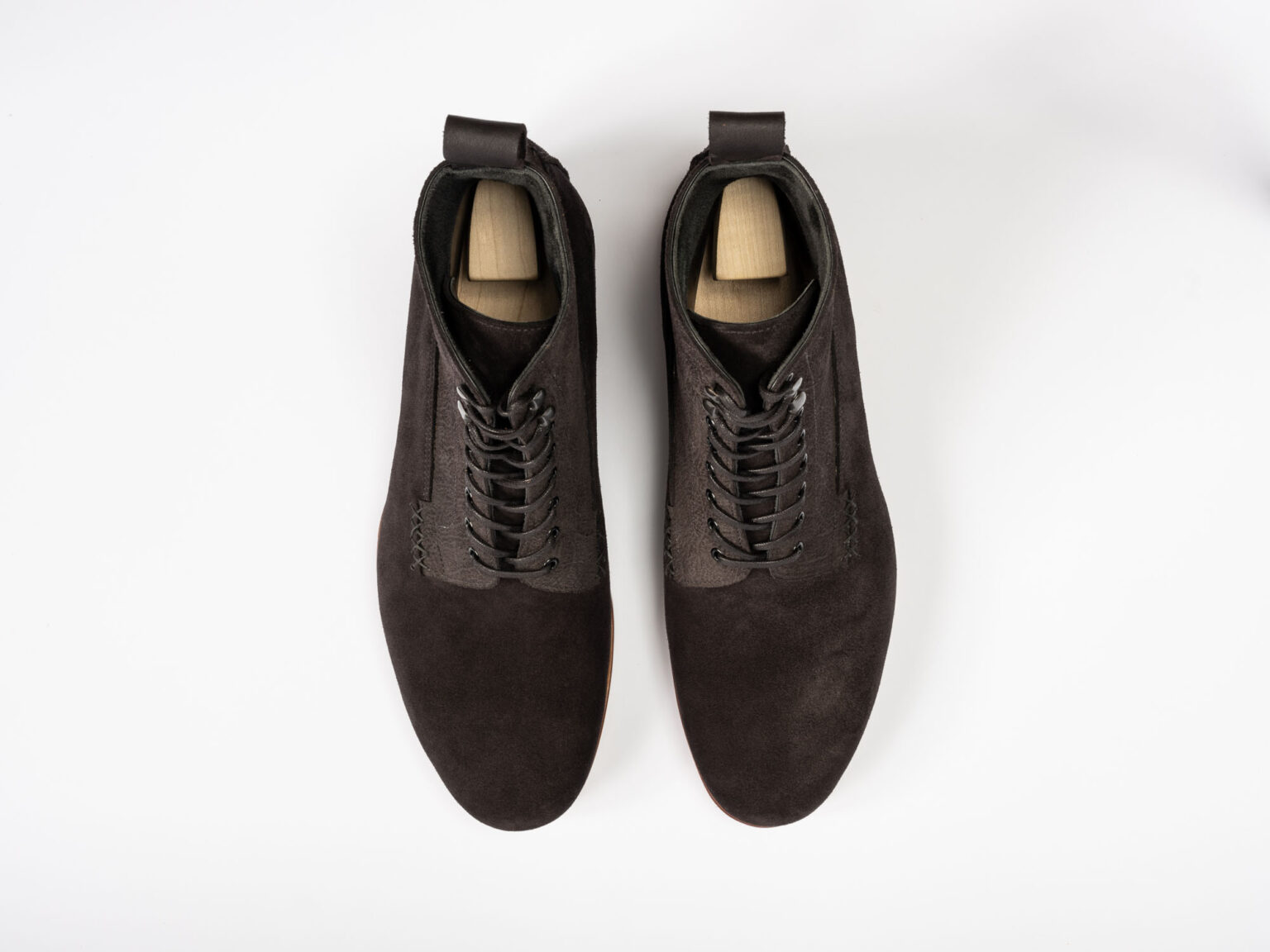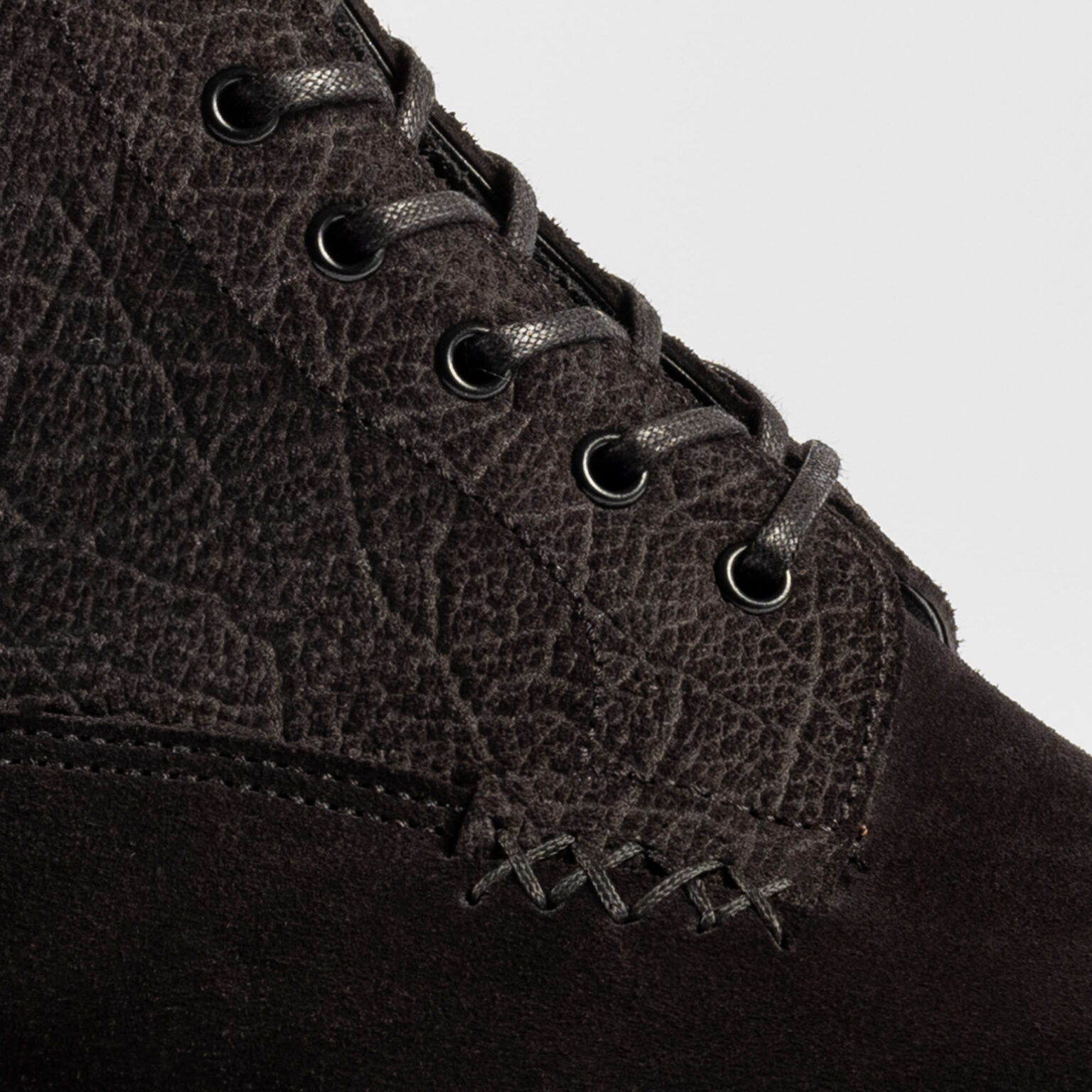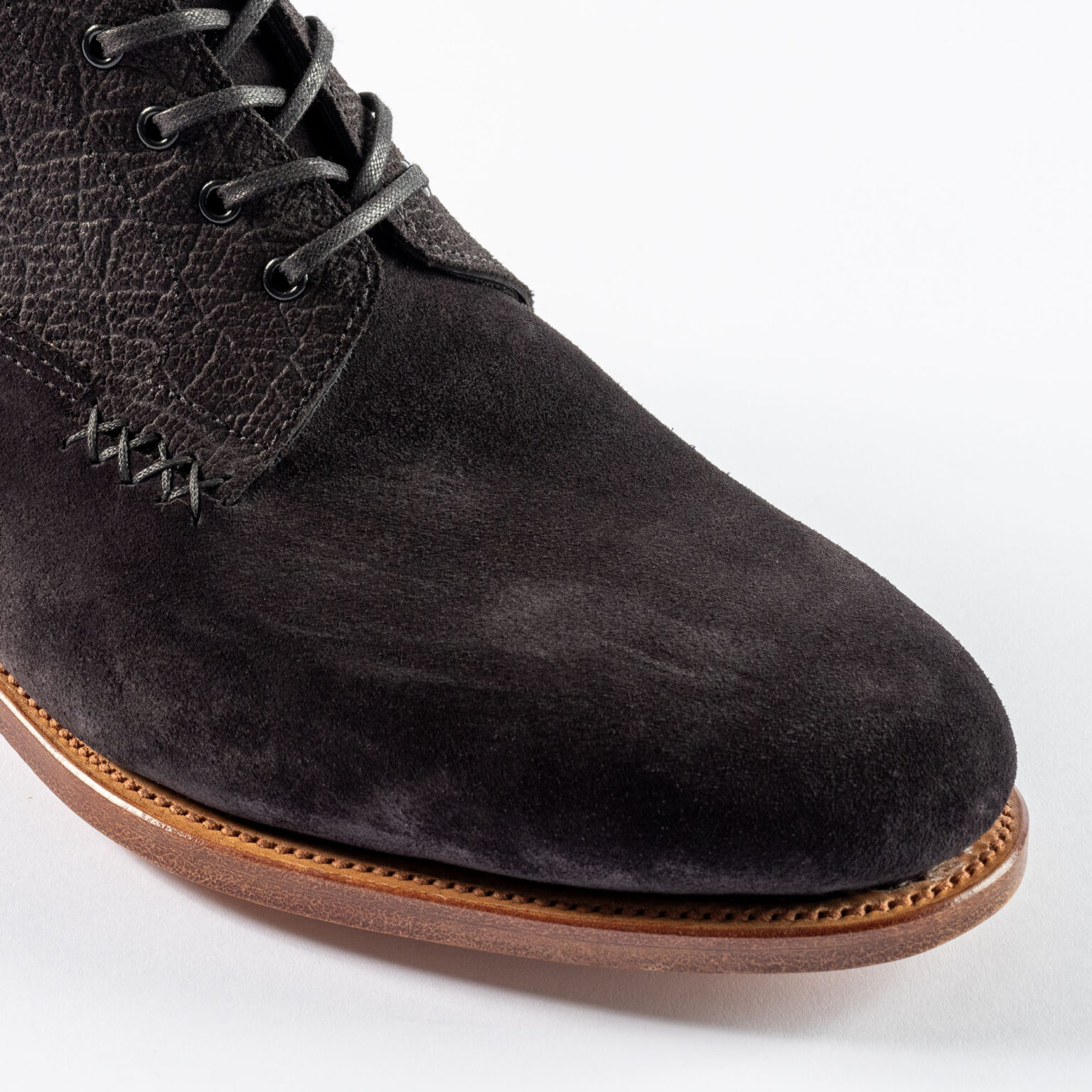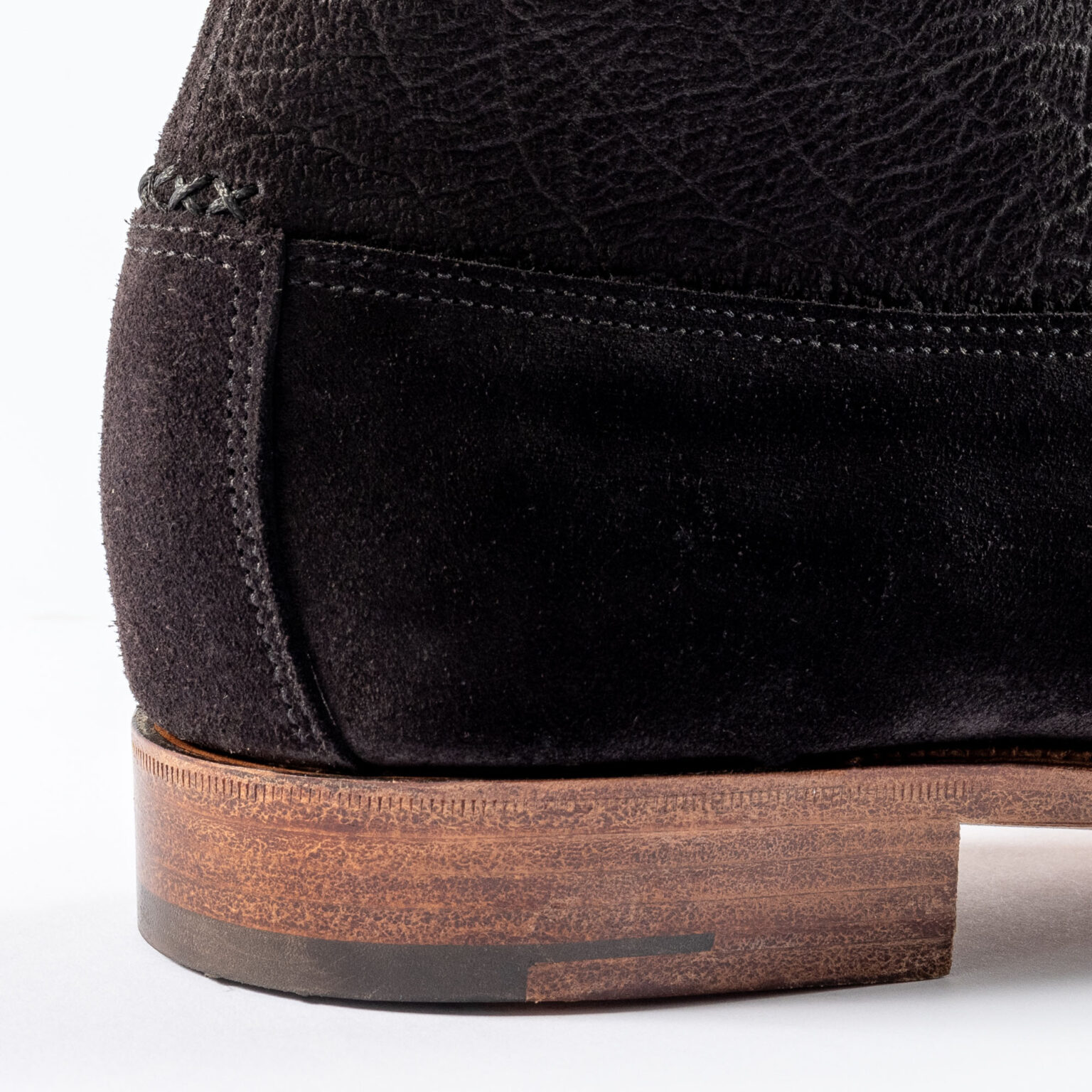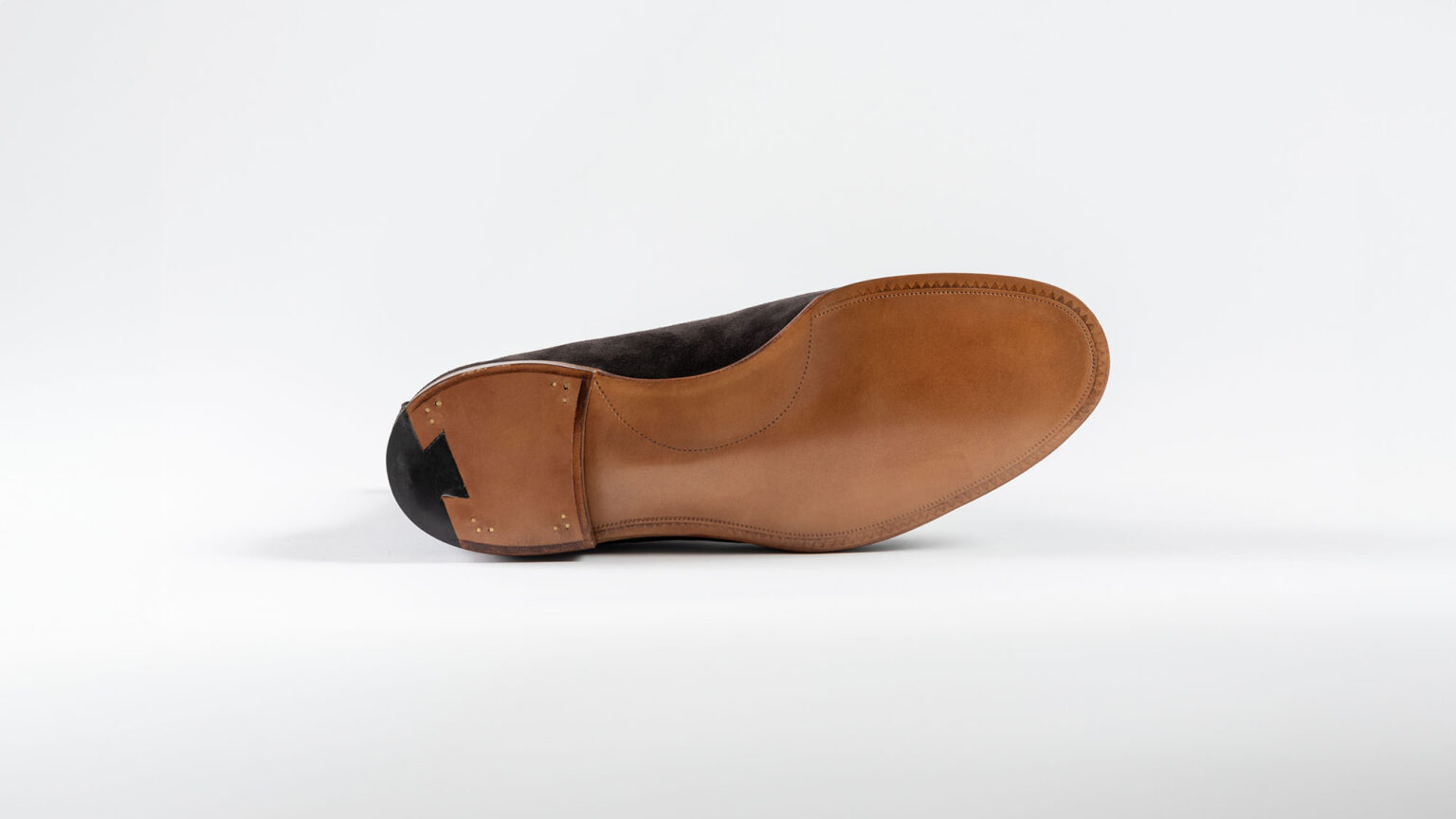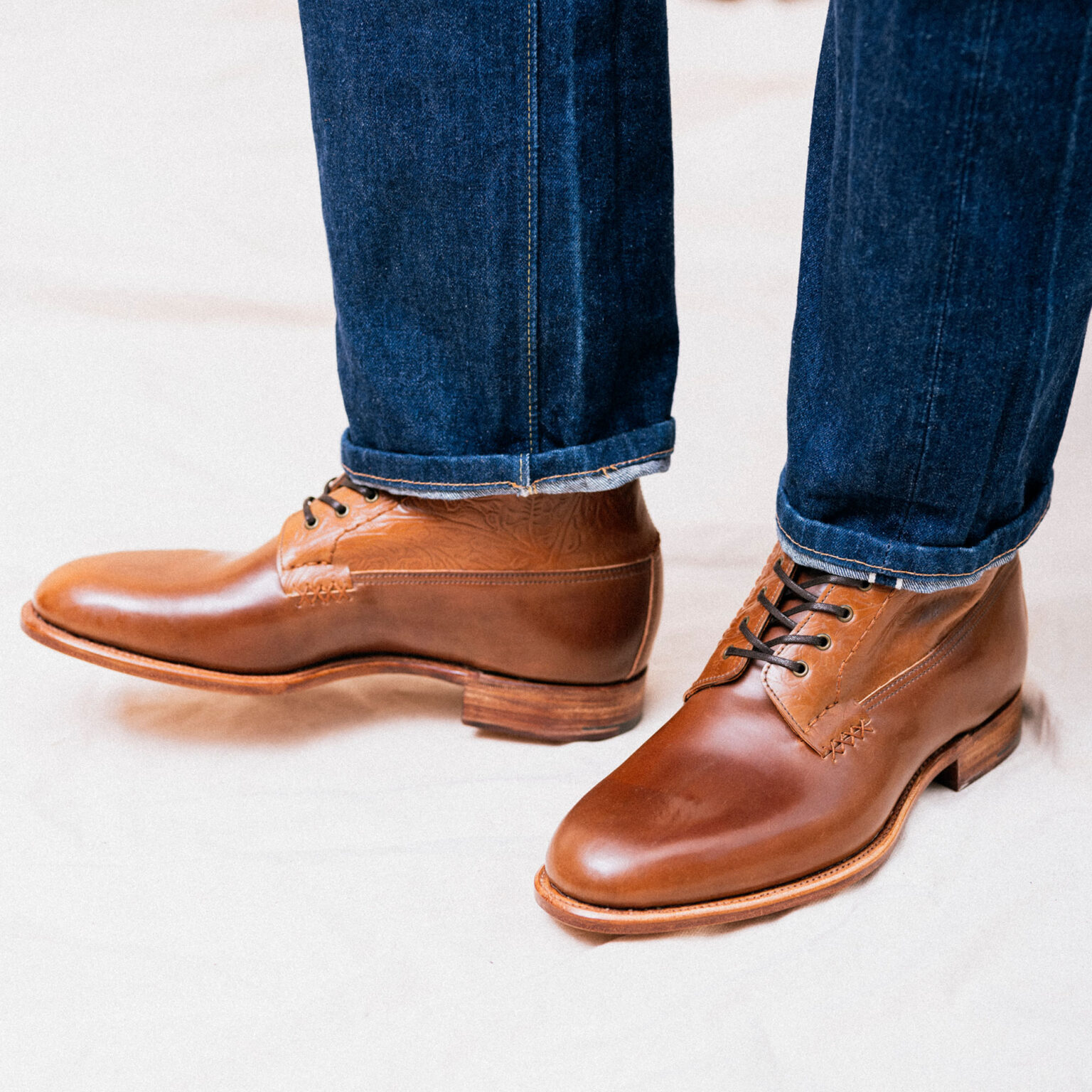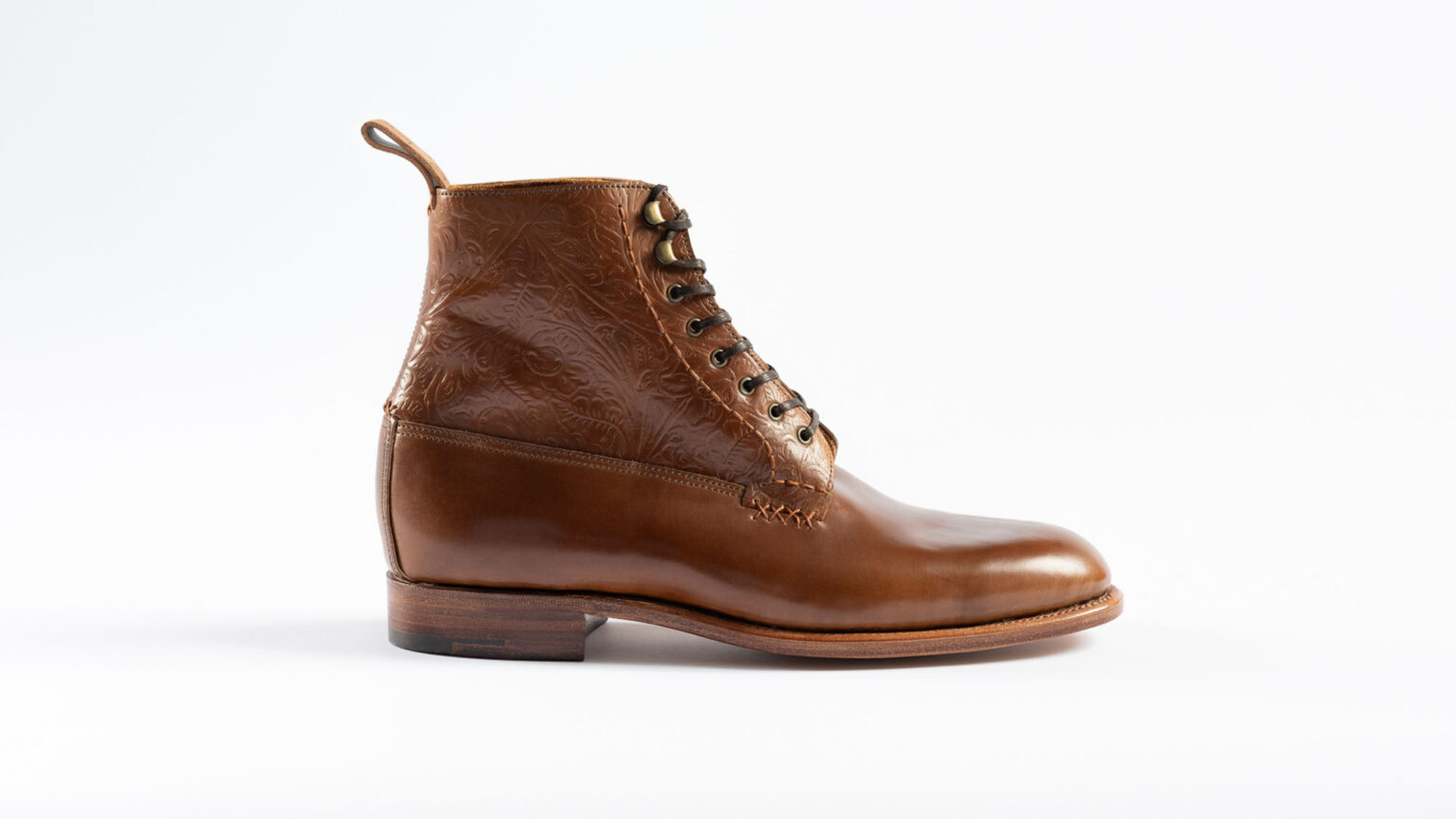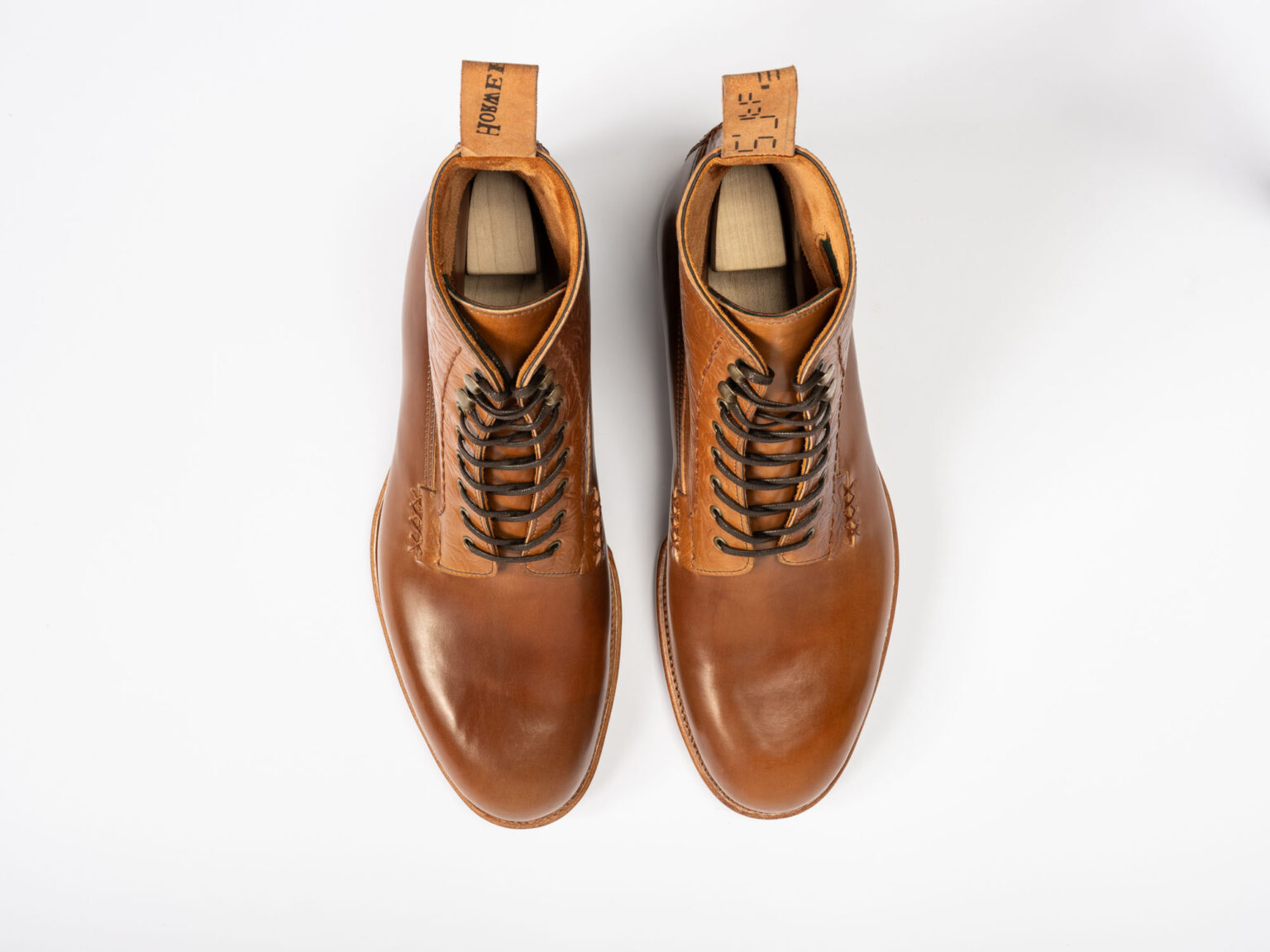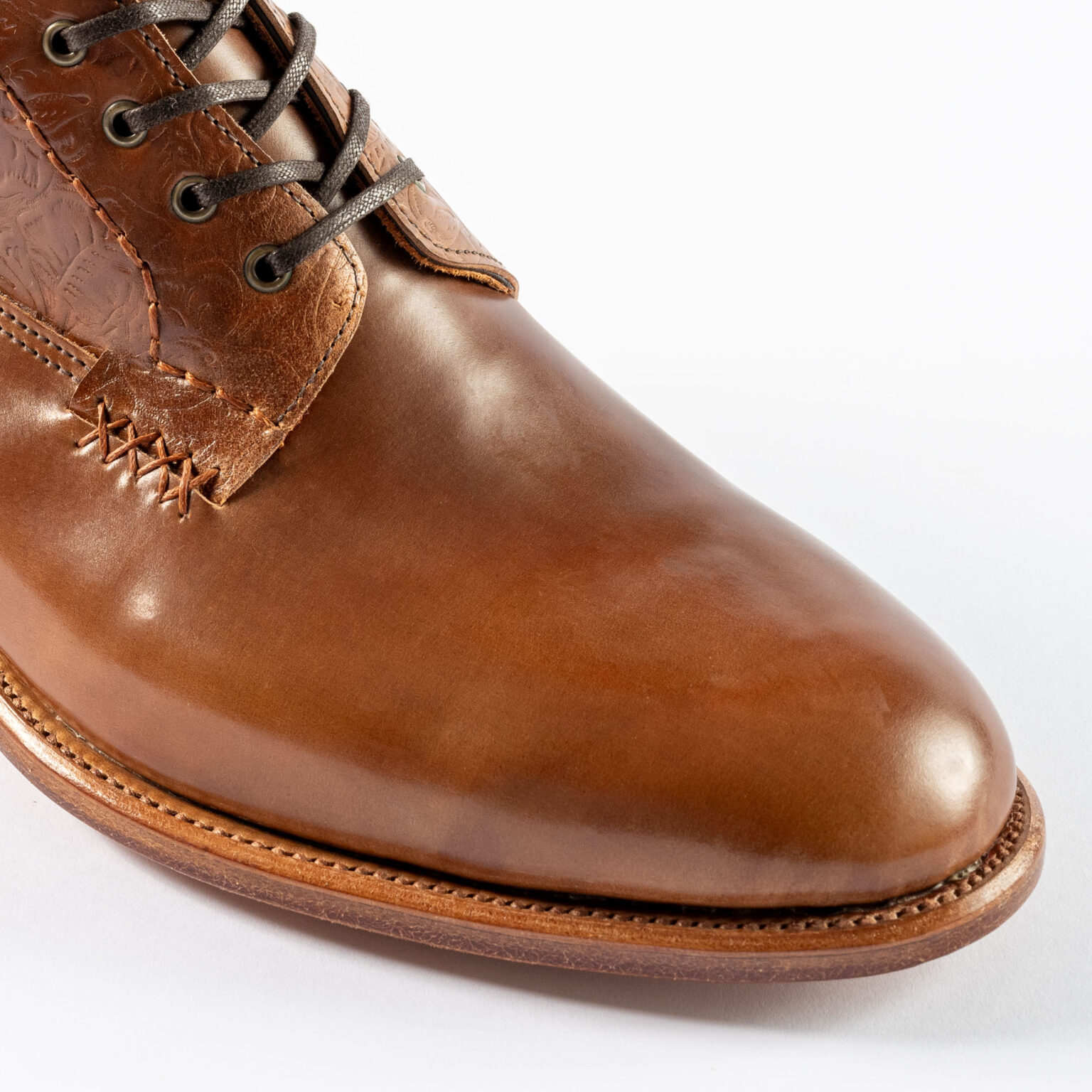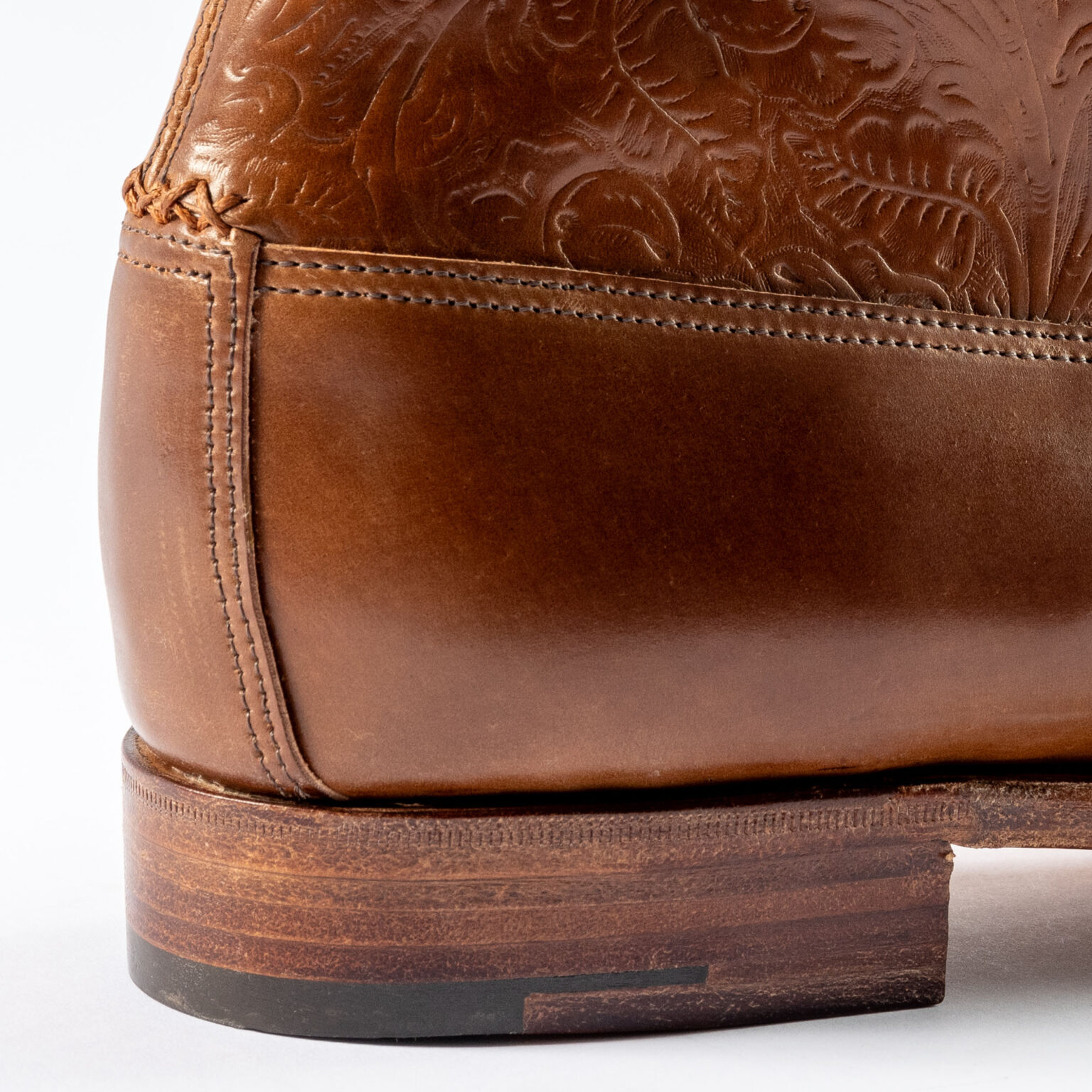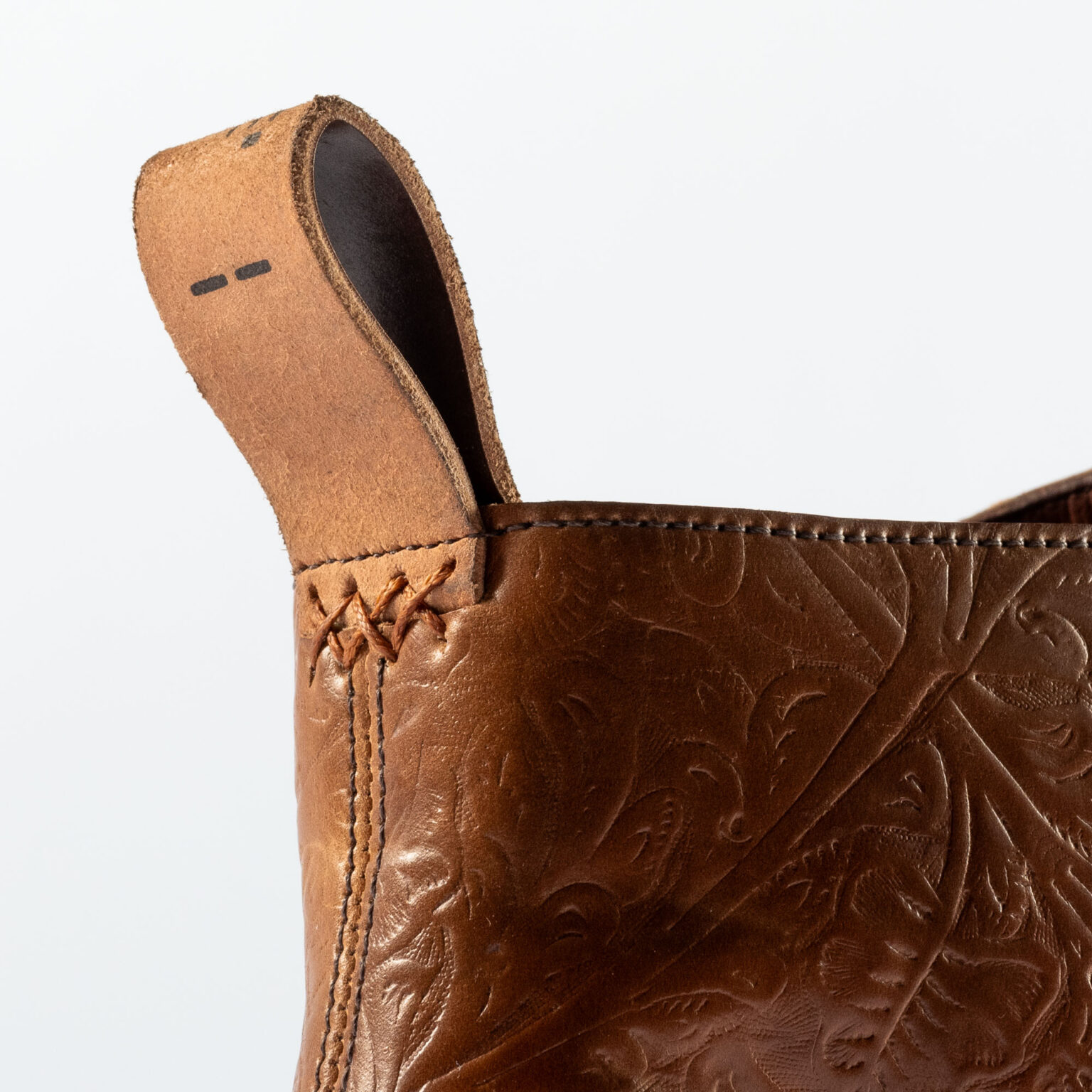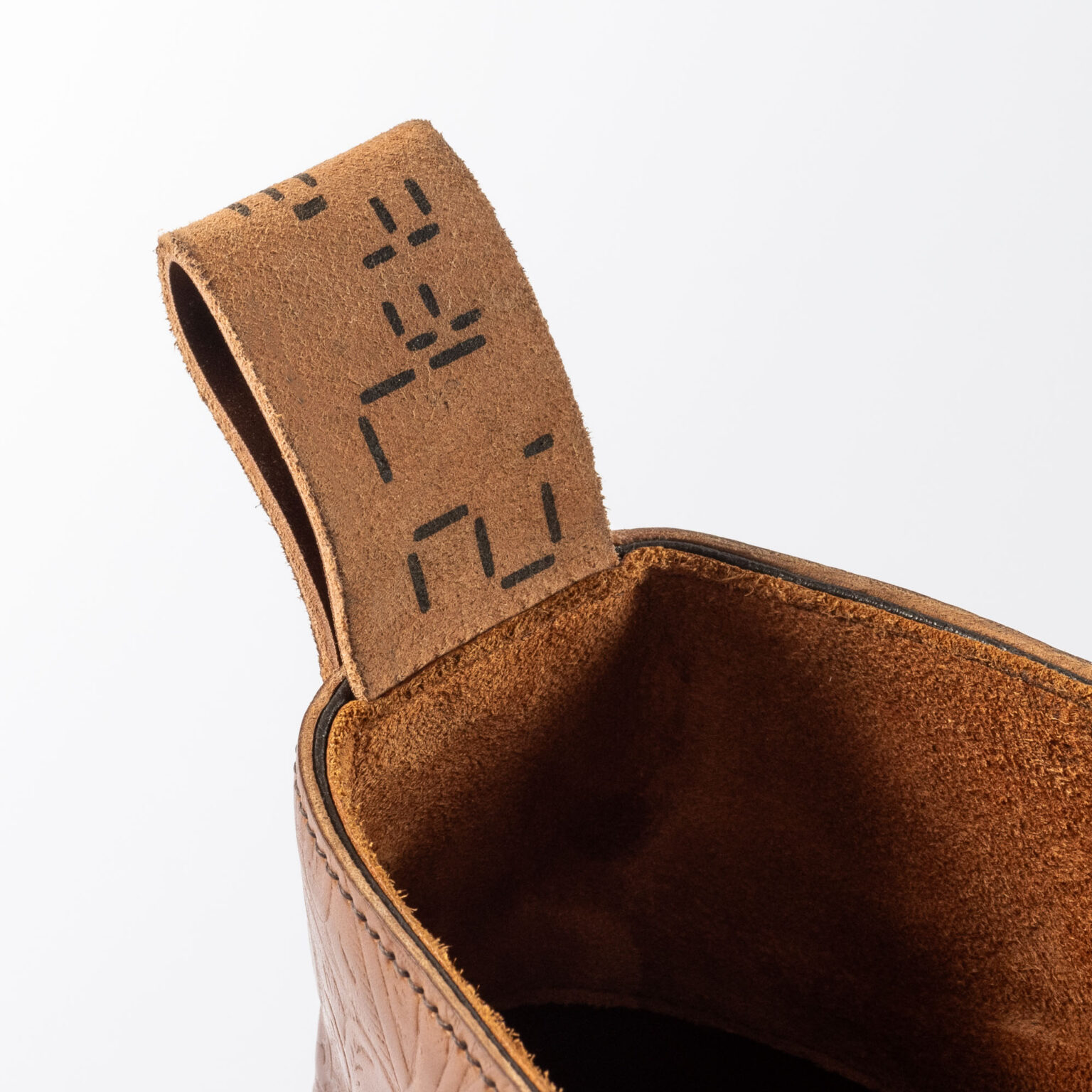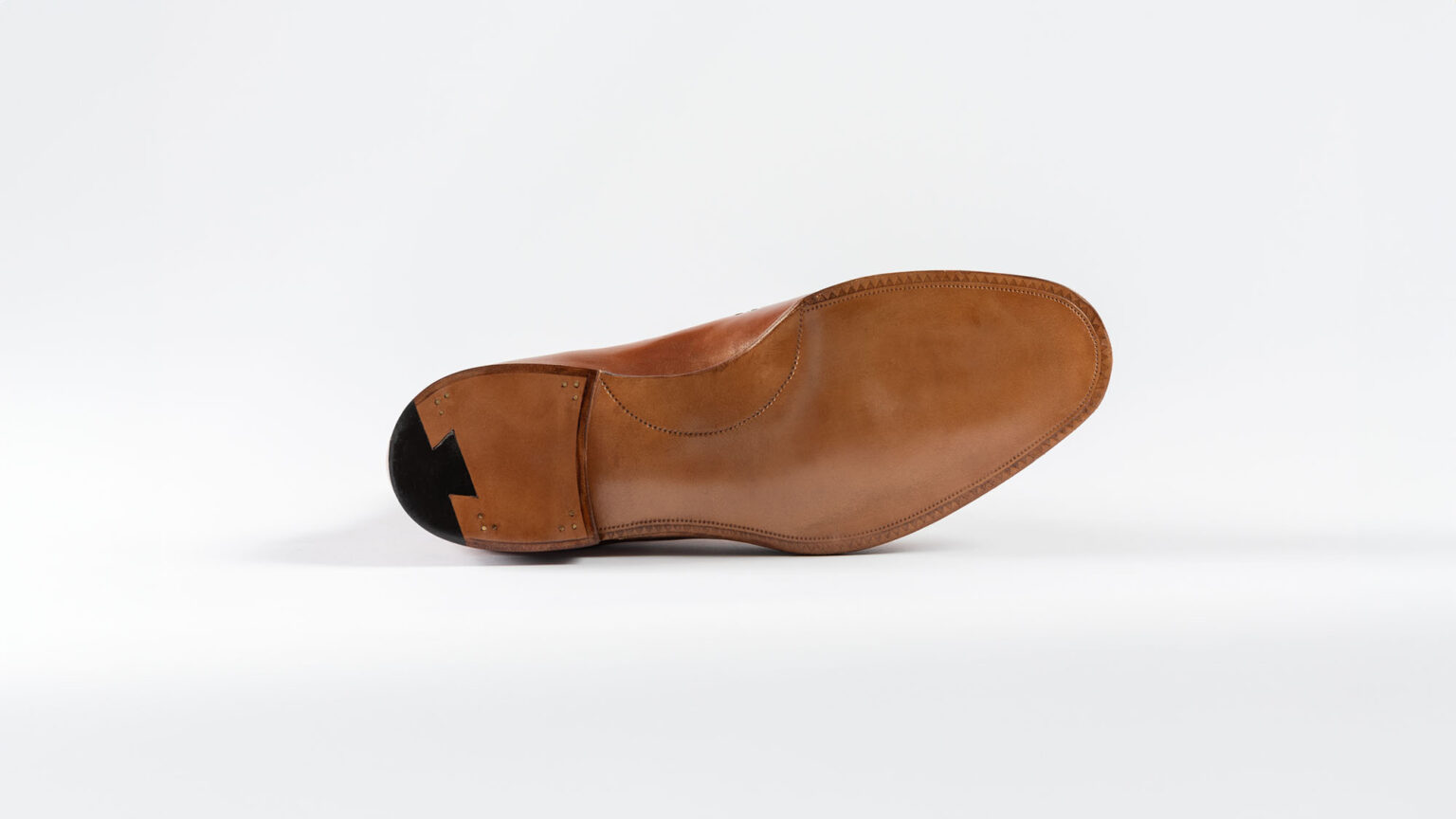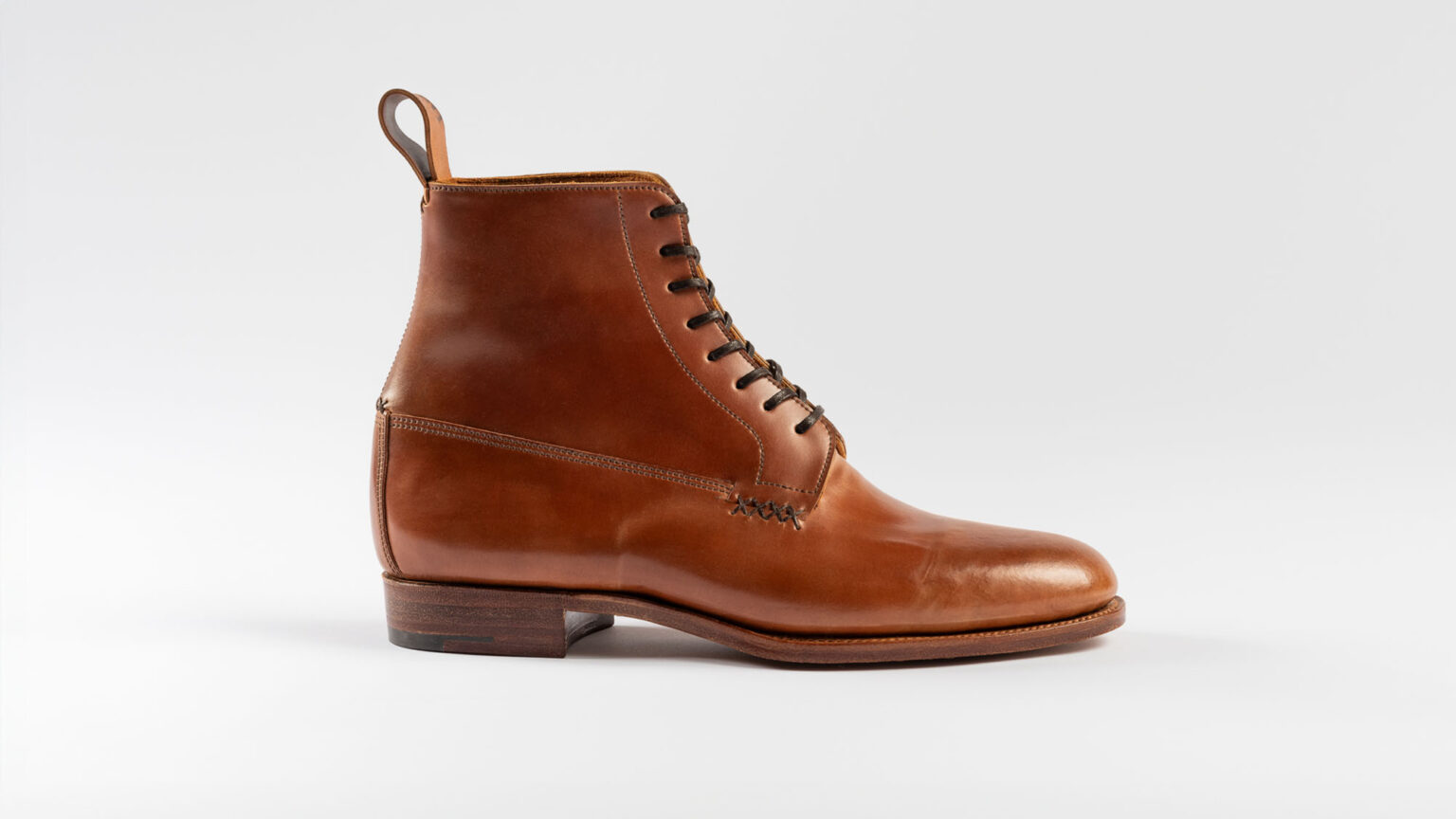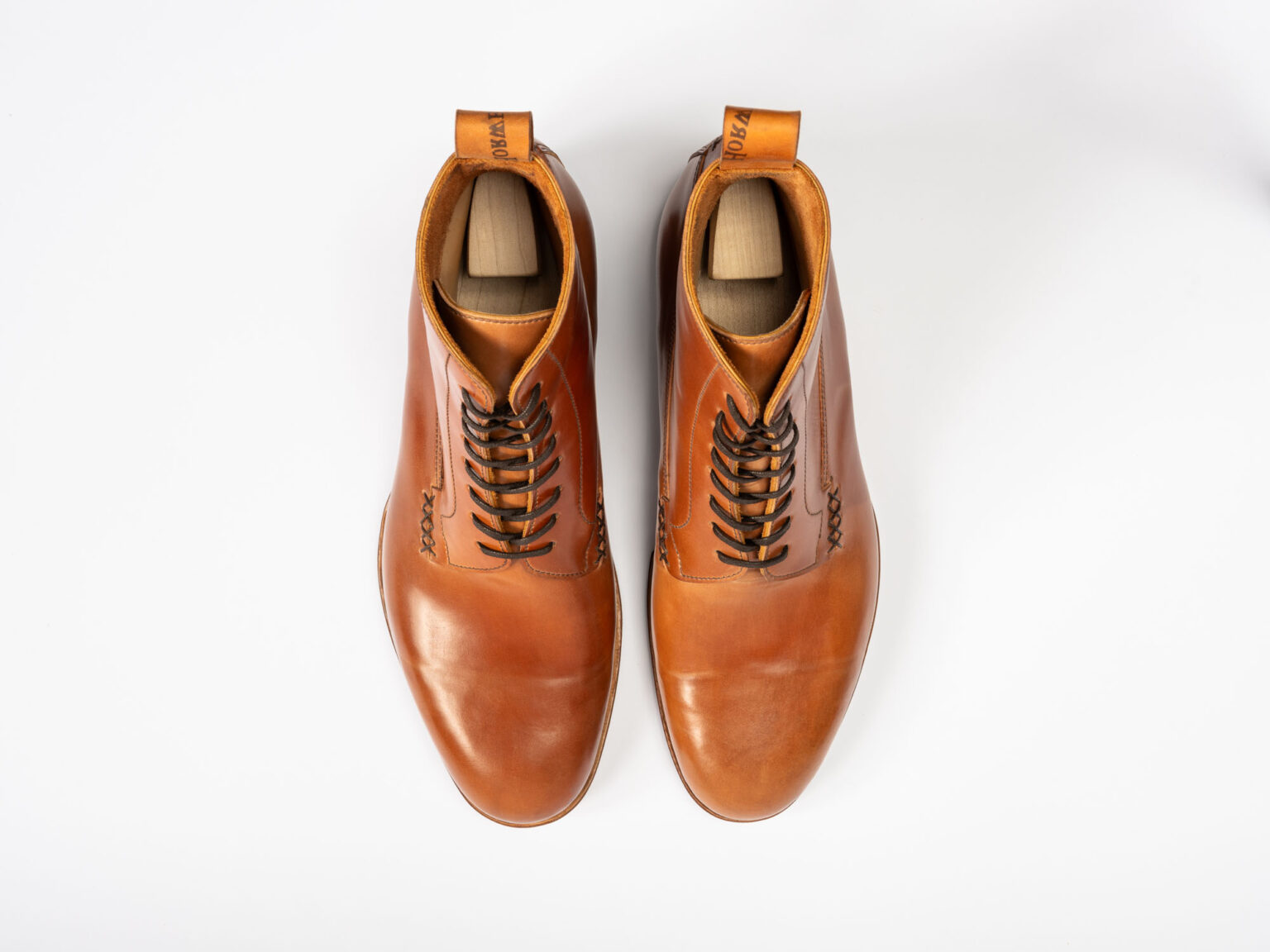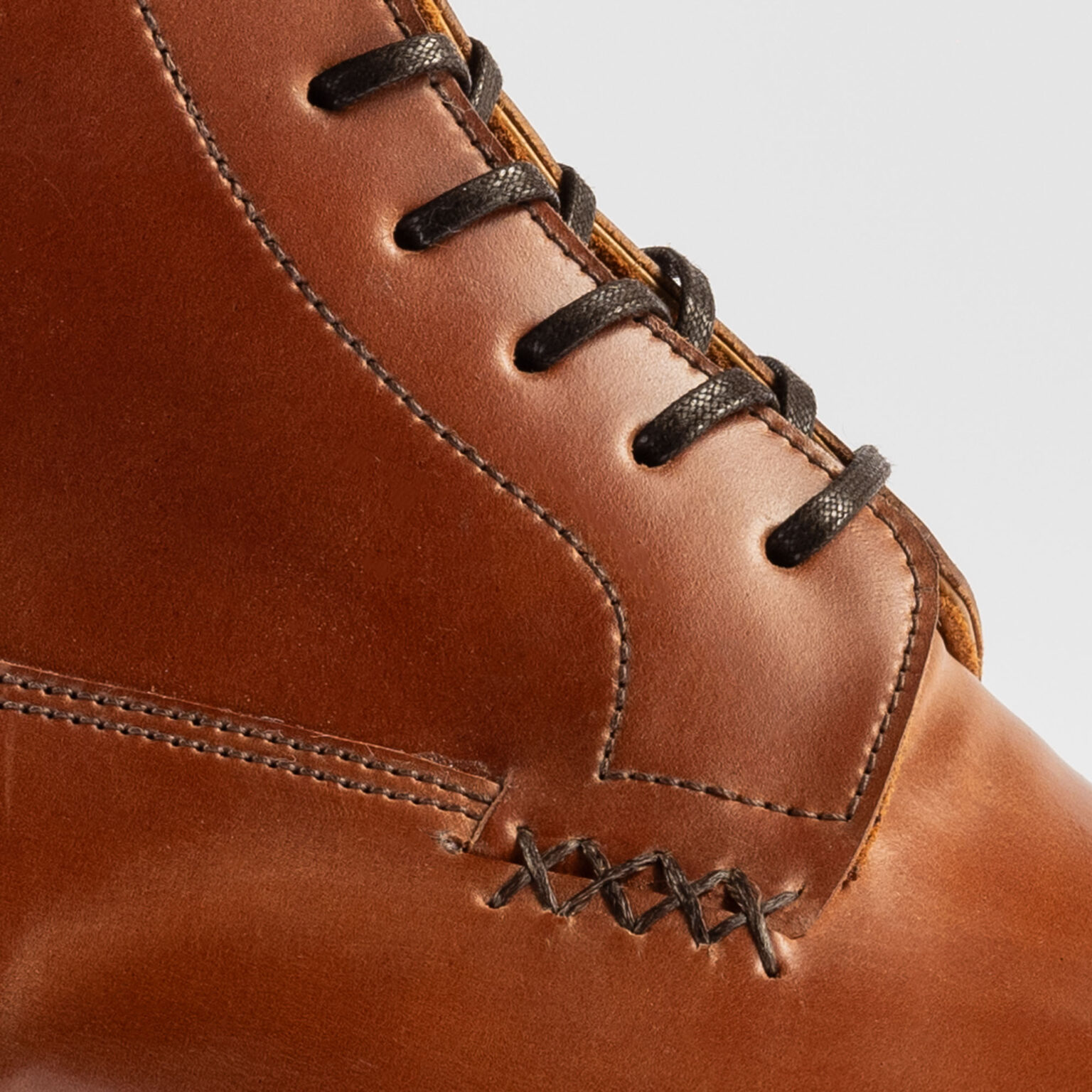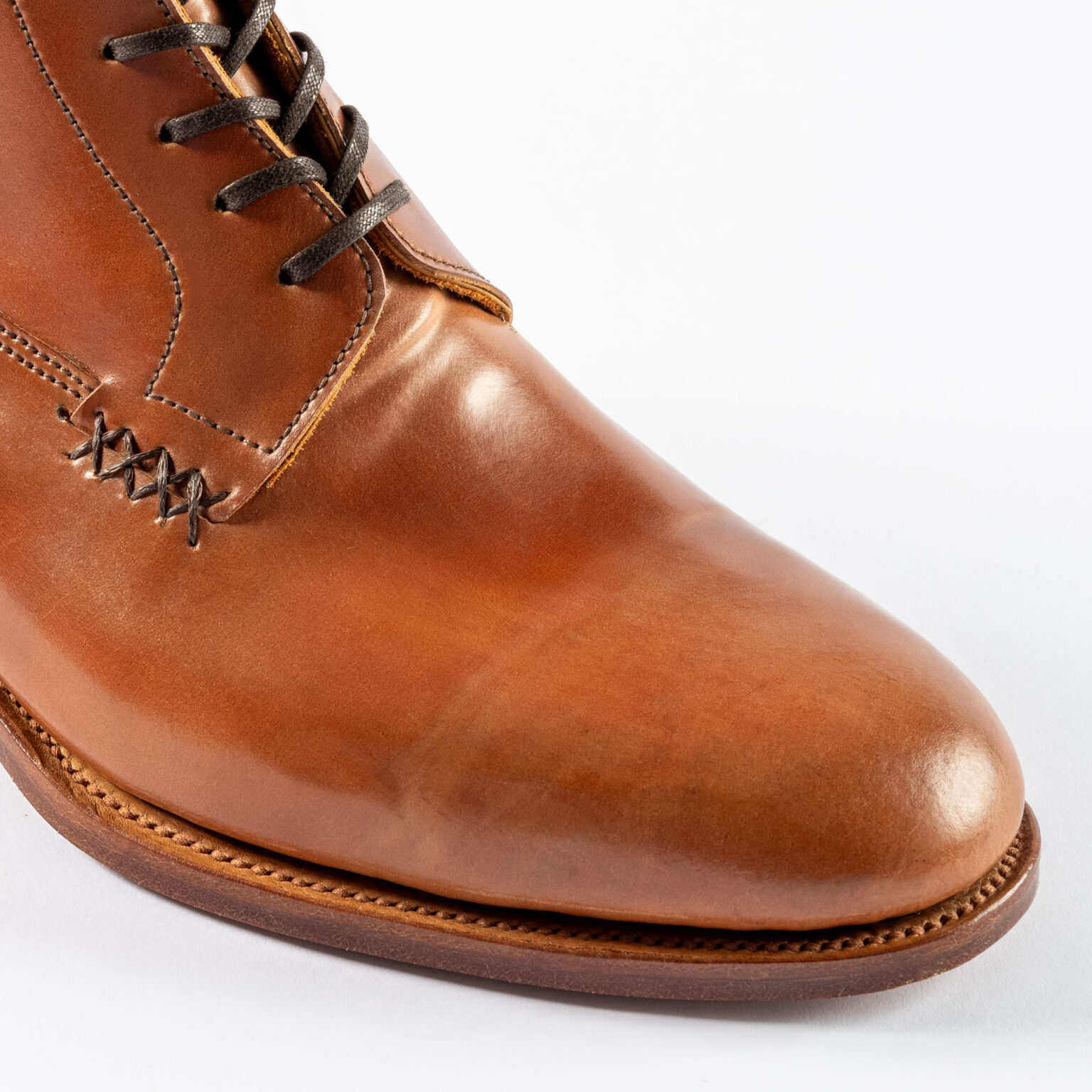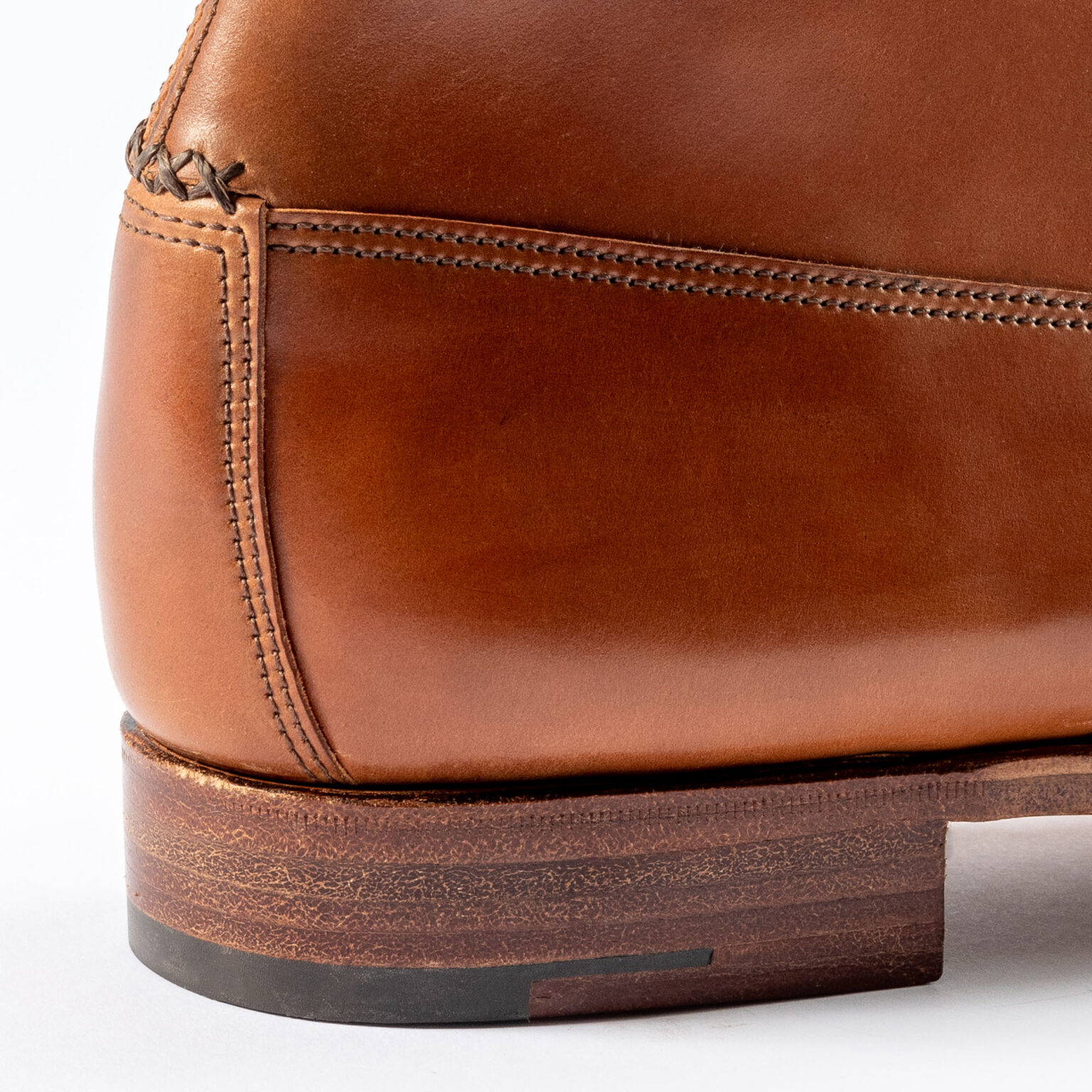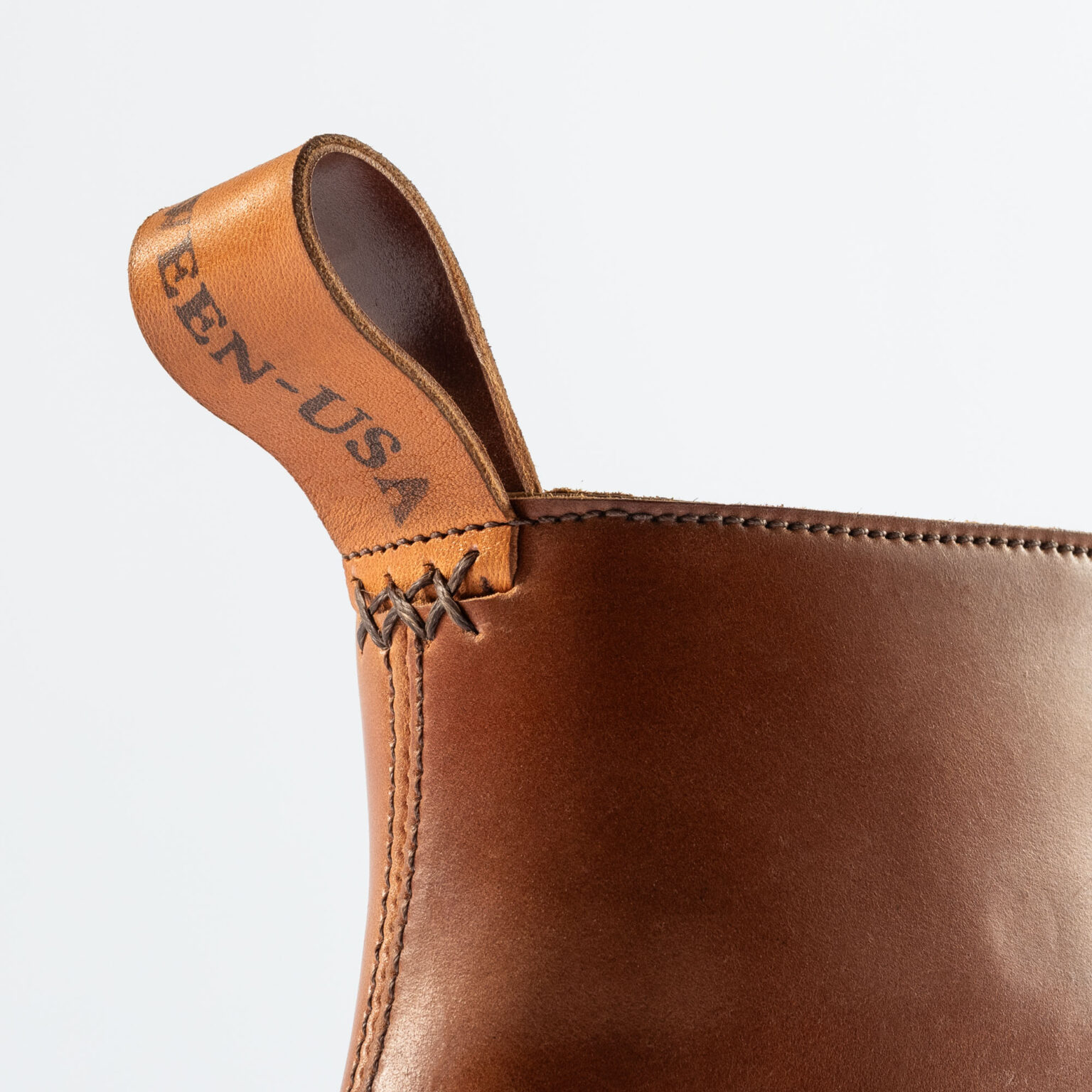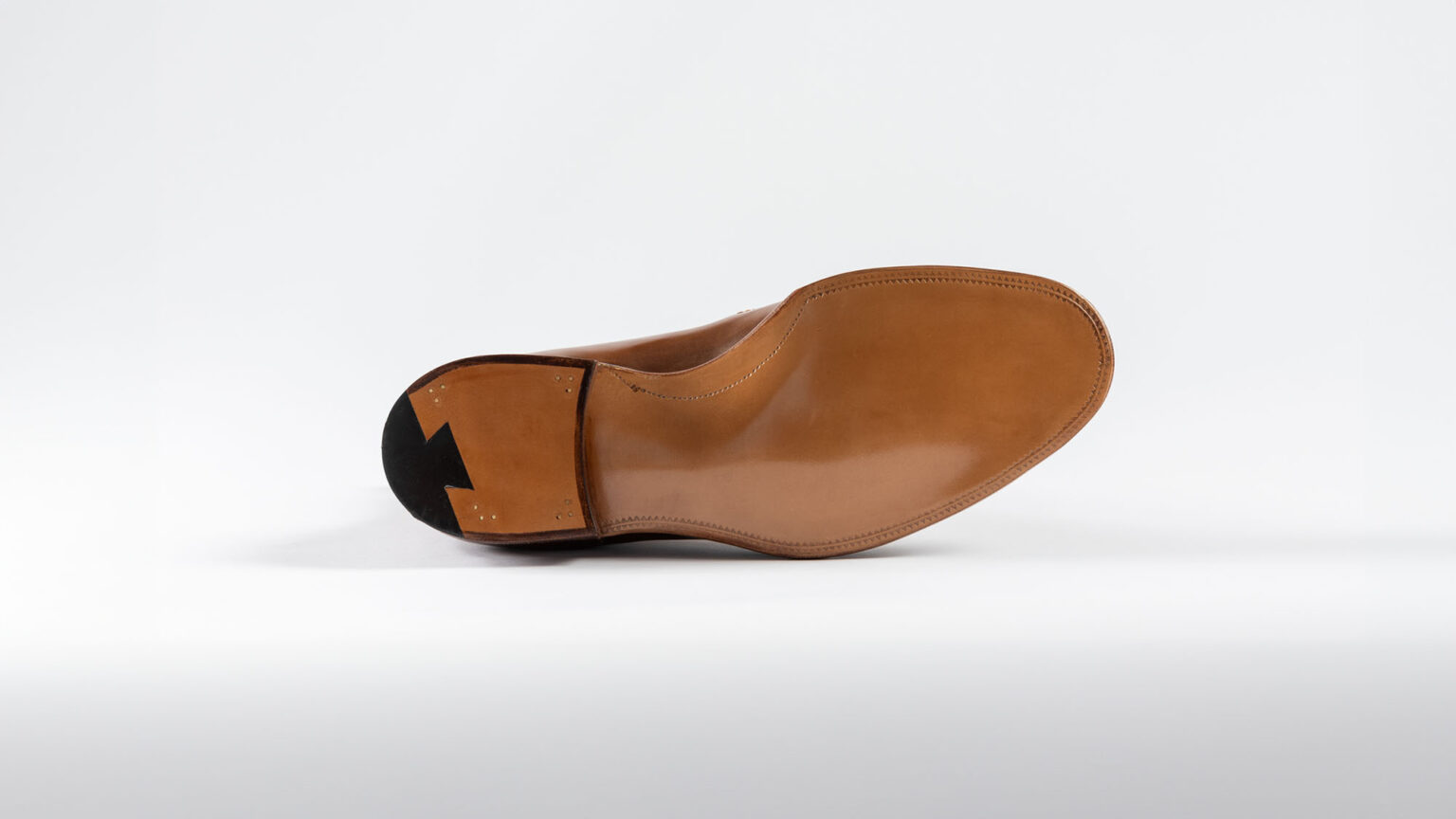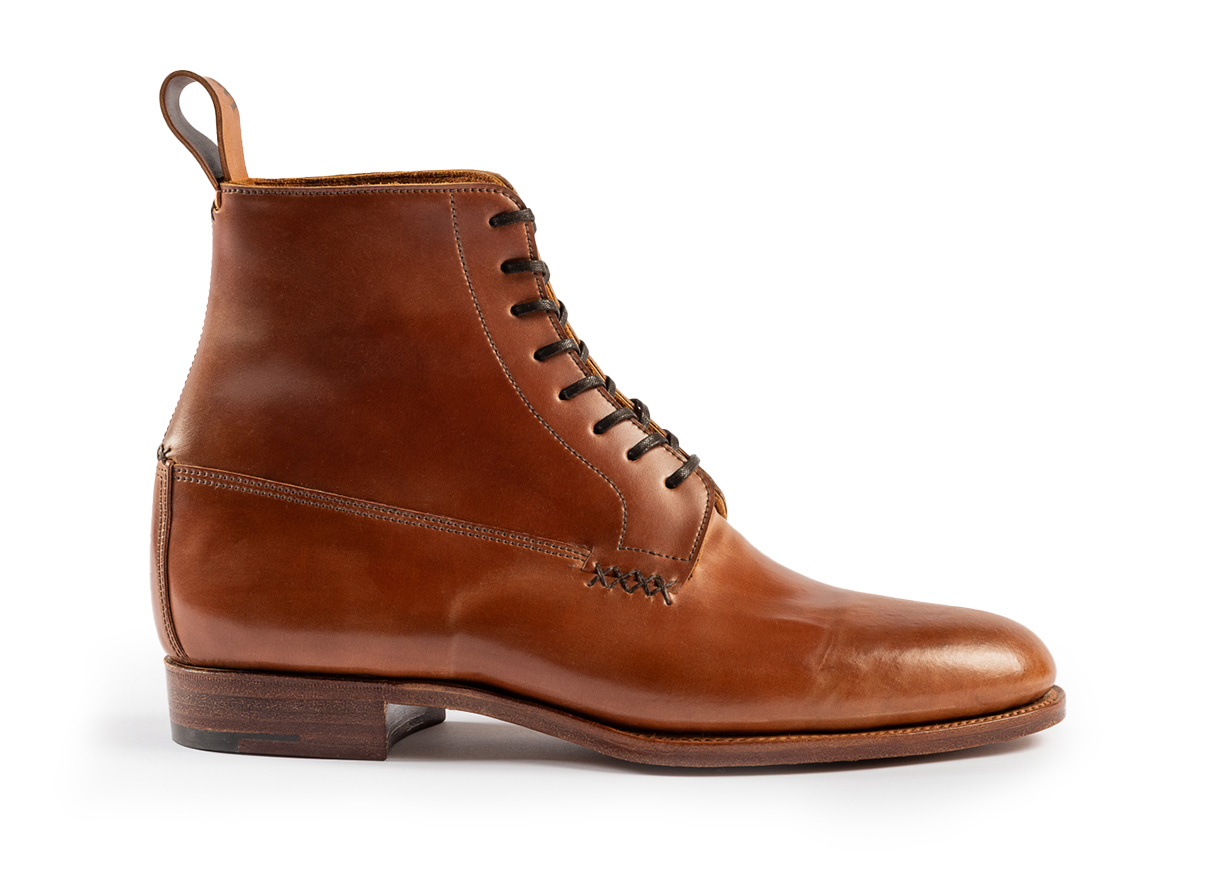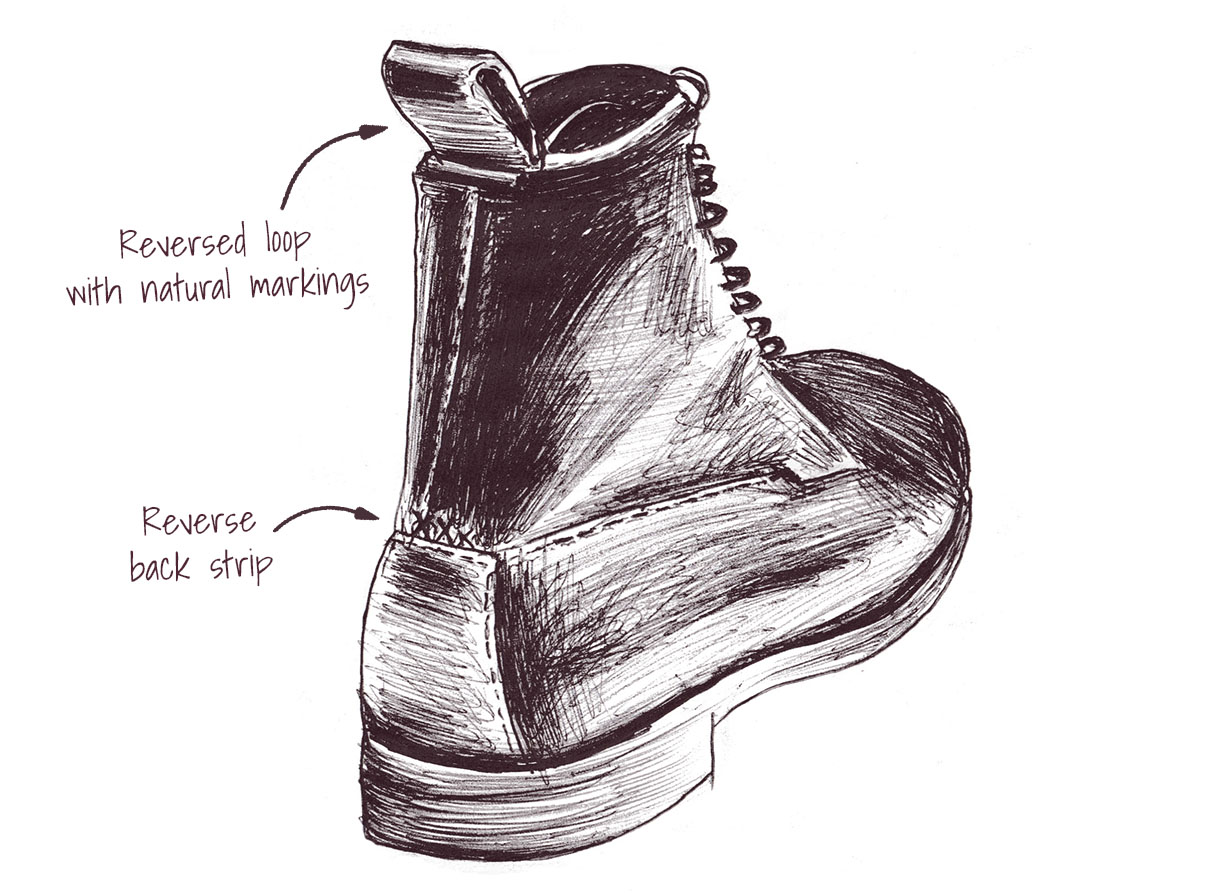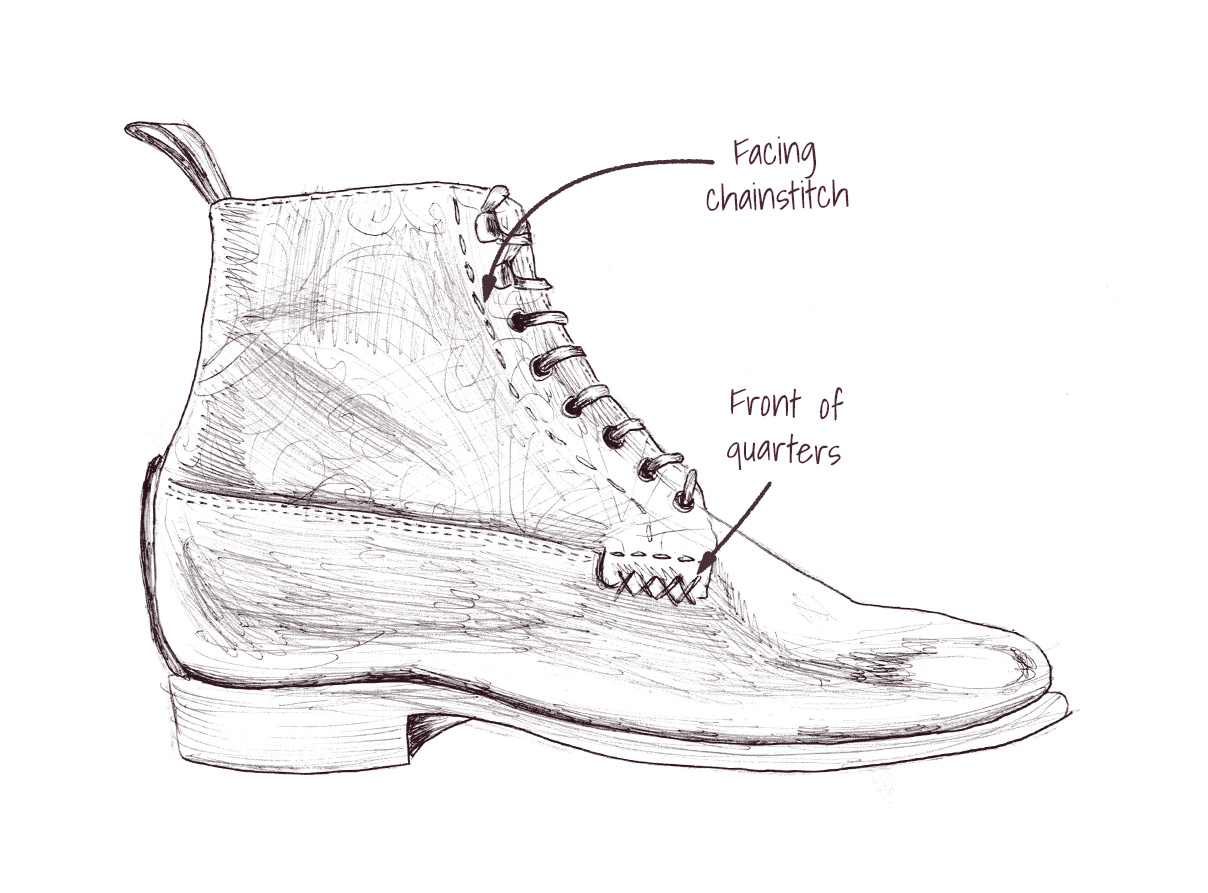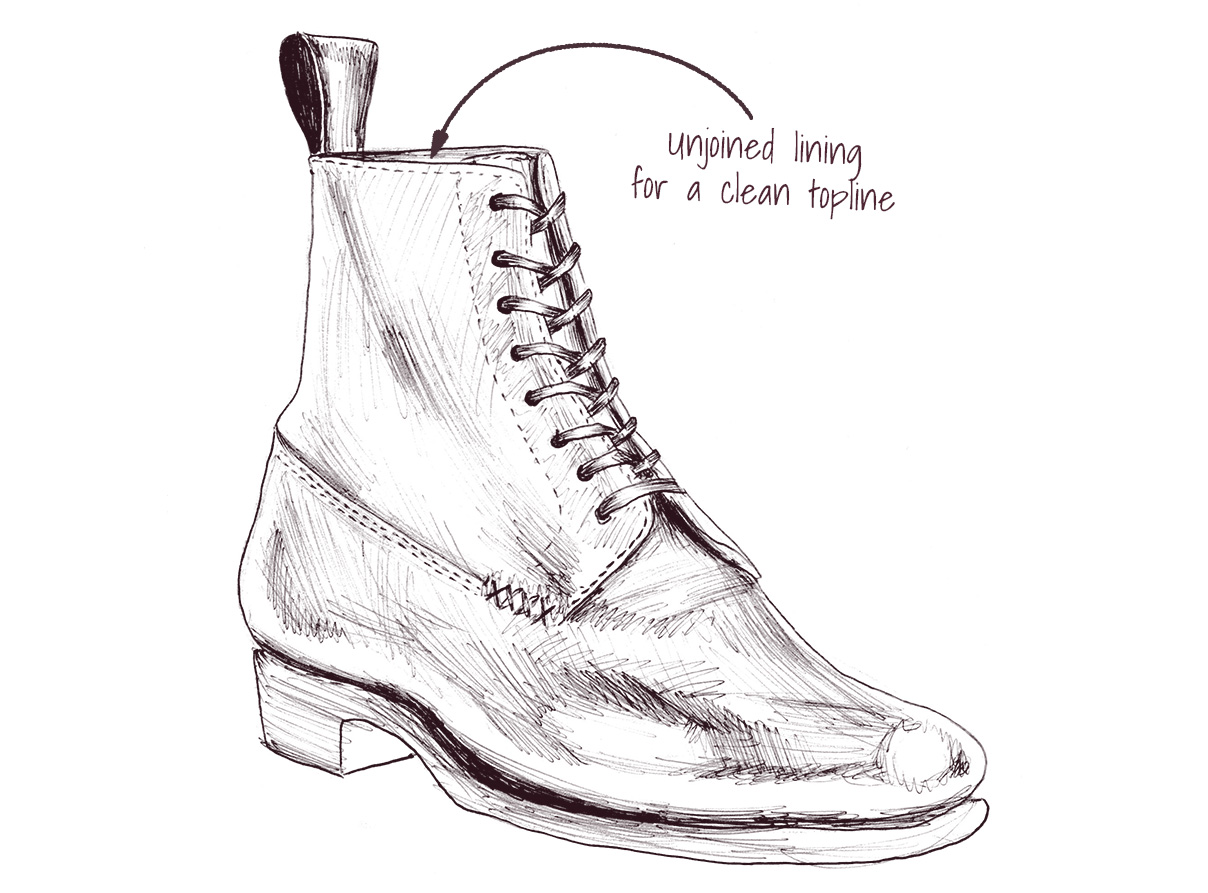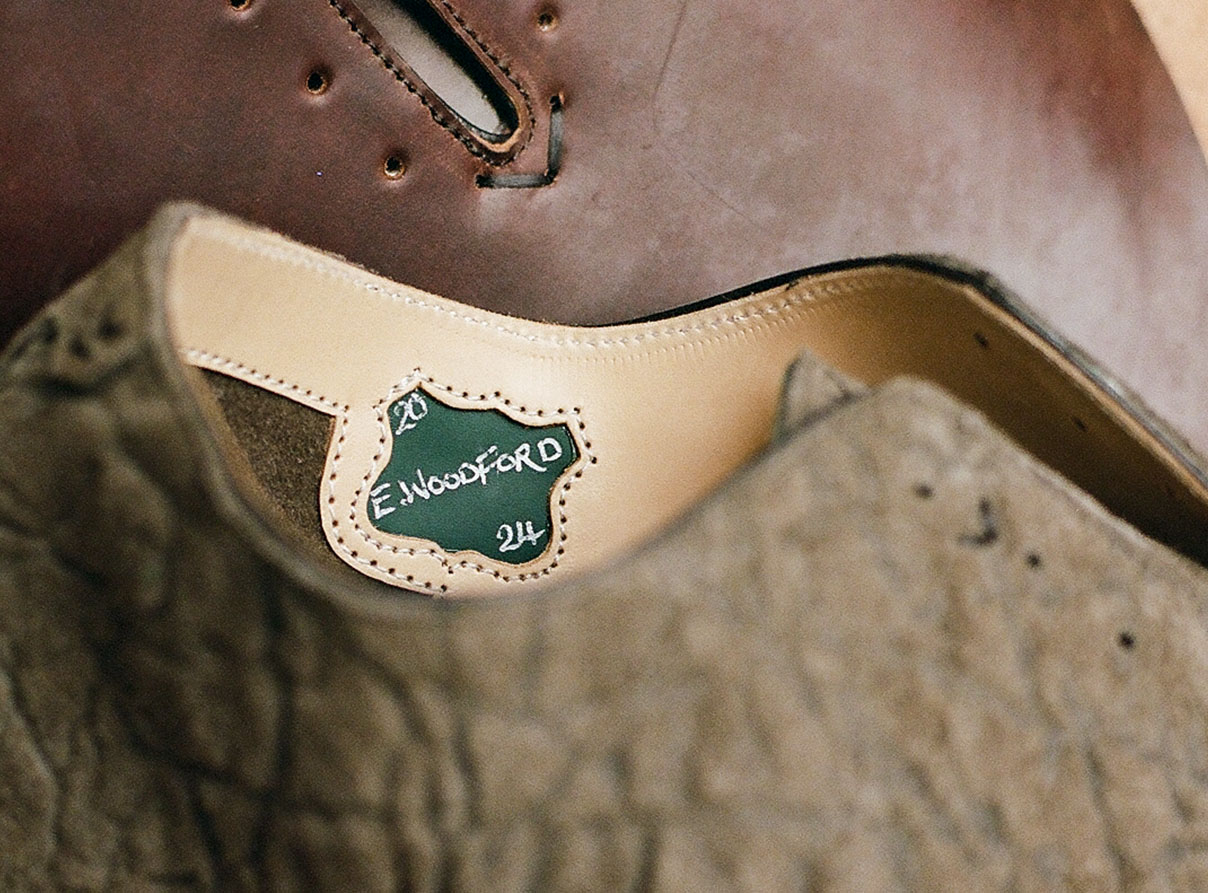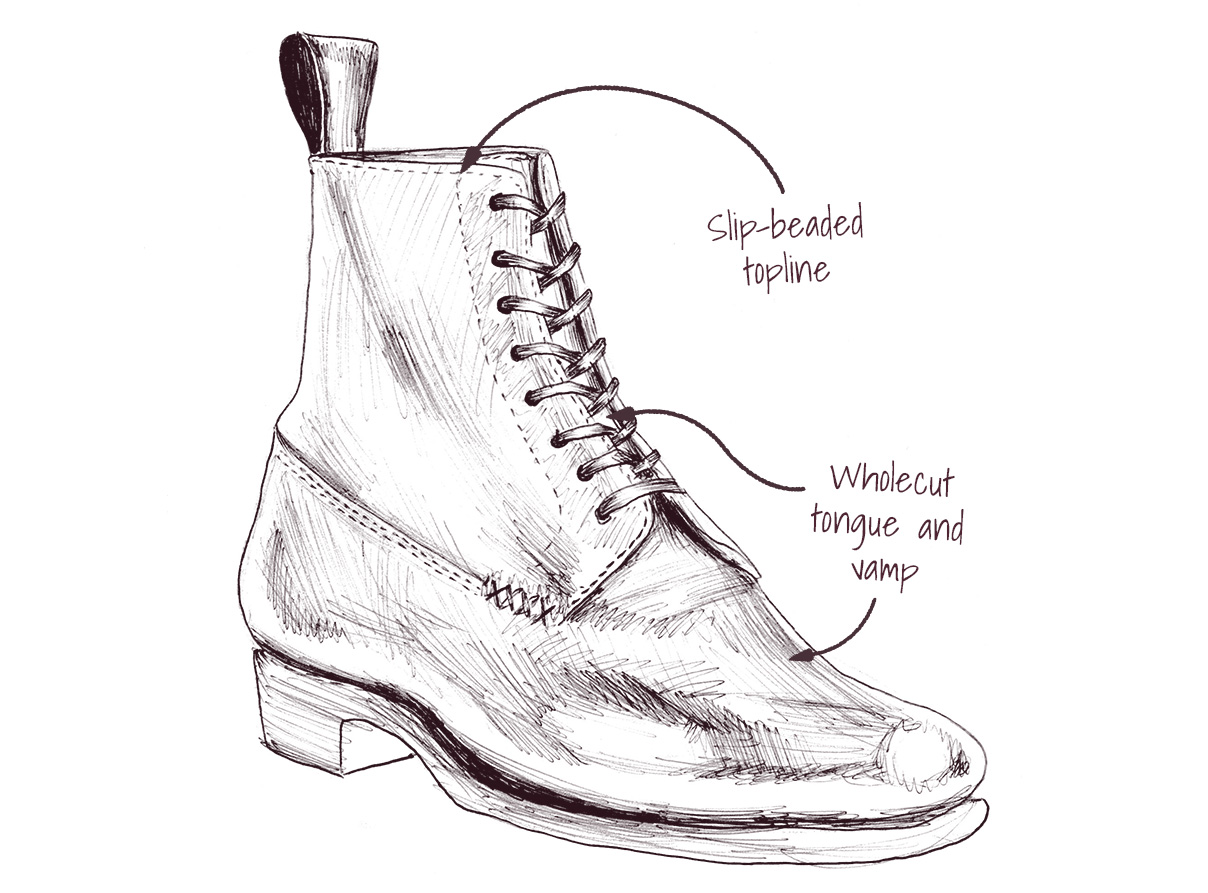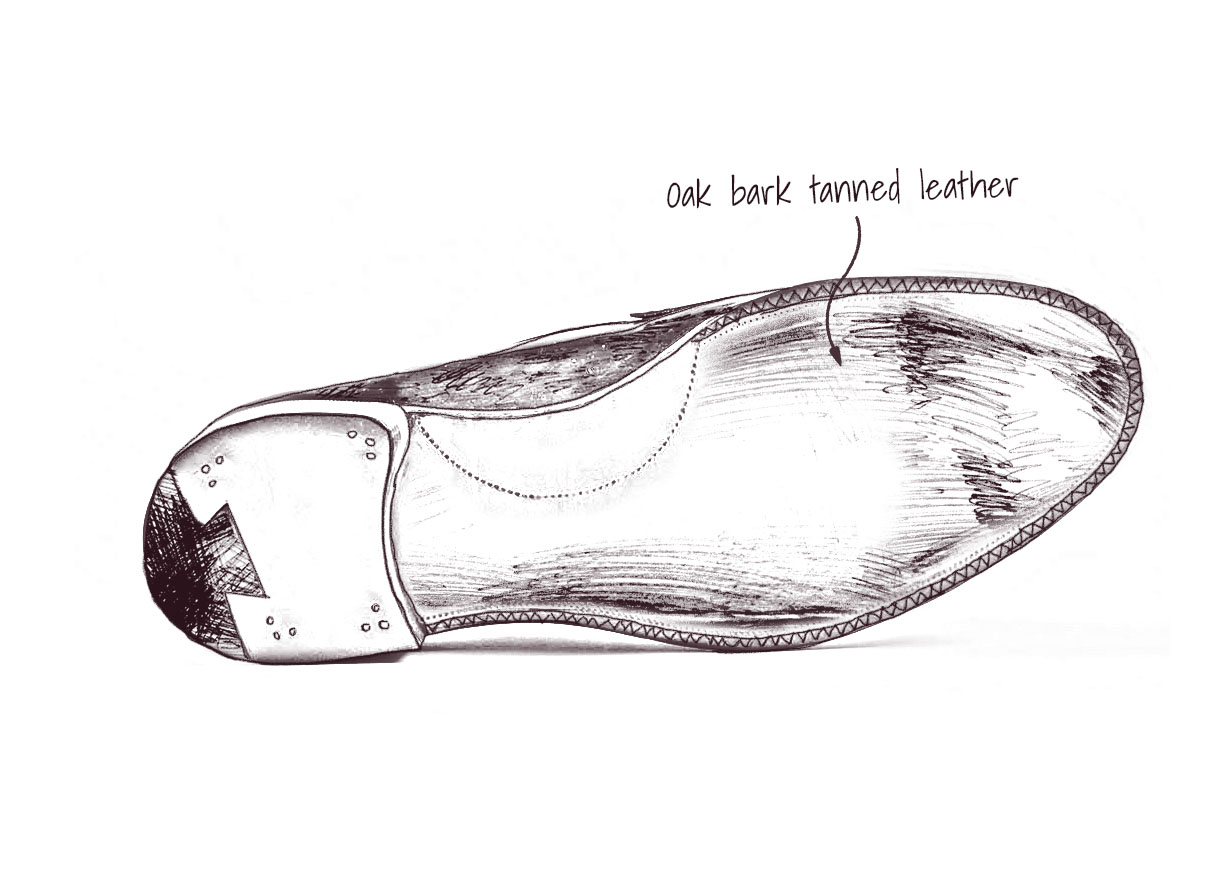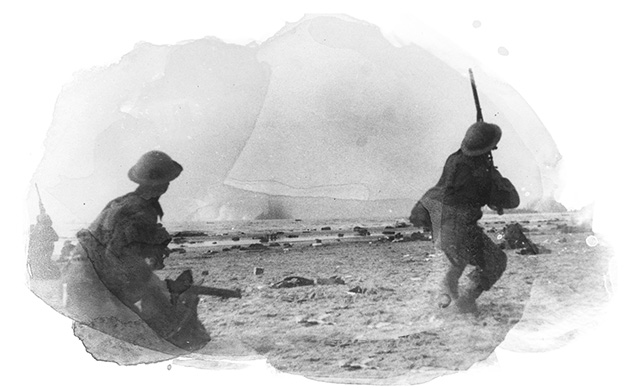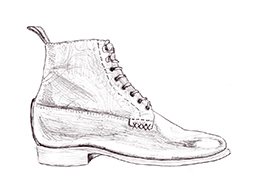Our interpretation of a World War One boot takes inspiration from original army footwear housed in the Northampton Shoe Museum. We’ve called it the Daneville, but often refer to it as the ‘Comrade,’ a word for fellow soldiers or members of an organisation.
It’s a derby boot, a design characterised by an open-lacing system, and made popular as a sport and hunting shoe in mid-19th century Europe.
The style was also worn by soldiers as far back as the early 1800s, alongside its similar-looking peer, the Blücher. For a century or so prior to that, Western men’s footwear tended to be a knee-high boot, buttoned at the side.
The reality of war was almost certainly responsible for the demand for shorter, more practical footwear, easier to put on and take off at speed or when exhausted or injured. Clear links to traditional military styles of the past run throughout the E.Woodford collection.
Civilian wear has long taken cues from the utilitarian designs associated with armed forces, because of their practicality, durability, and distinct aesthetic.
War is sewn into the fabric of the Woodford family, businesses, and the history of the whole Northampton shoe industry. Staying true to the look of the original boot from more than a century ago we’ve upgraded its components to meet E.Woodford’s exacting standards.
“I wanted to create a boot my great-grandfather would have made a version of… Upgraded to something I hope would do him proud and also be a little more lightweight!”
– Chris Woodford
